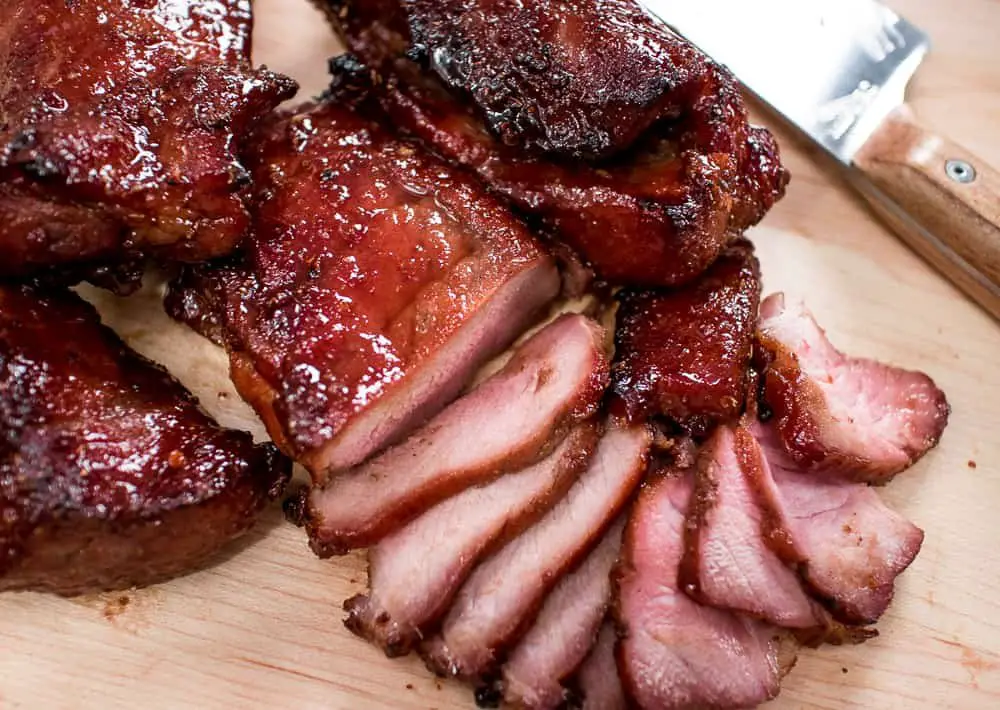Take Me to the Recipes
Welcome to a culinary journey through the rich tapestry of Chinese cuisine, where every bite tells a story, and each of the Chinese Pork Recipes is a masterpiece of flavors. In this gastronomic exploration, we delve into the world of savory delights, focusing on the versatile and beloved ingredient: pork. China, with its diverse regions and culinary traditions, offers a treasure trove of delectable recipes that showcase the artistry of Chinese cooking.
Embark on a flavorful adventure as we present 39 tantalizing recipes that celebrate the marriage of succulent pork and an array of aromatic spices, herbs, and sauces. From the vibrant streets of Beijing to the spice-laden kitchens of Sichuan, each recipe unveils a unique facet of Chinese culinary heritage.
Whether you are a seasoned home chef or an adventurous food enthusiast, these 38 Chines Pork recipes promise to elevate your cooking experience. Join us as we unravel the secrets behind iconic dishes such as Char Siu (Chinese BBQ Pork), Peking Pork Chops, and fragrant Pork Fried Rice. Get ready to savor the bold and harmonious flavors that define Chinese pork cuisine, and let your kitchen become a canvas for the art of Chinese gastronomy. Prepare to tantalize your taste buds and embark on a culinary odyssey that captures the essence of Chinese pork perfection.
Savor iconic Chinese Pork Meals – Click on each tantalizing picture to open up the Recipe
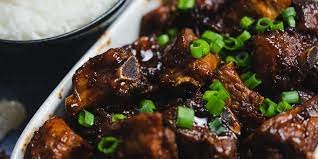
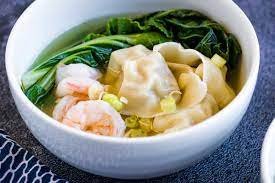
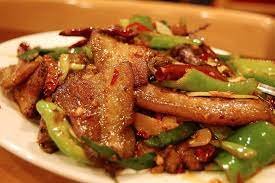
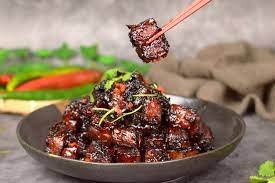
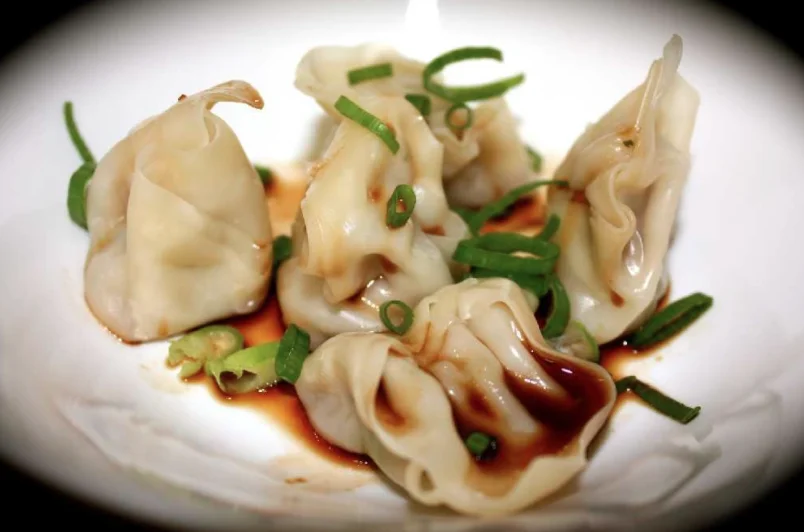
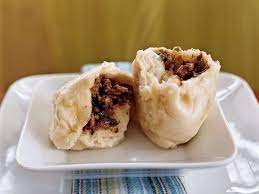
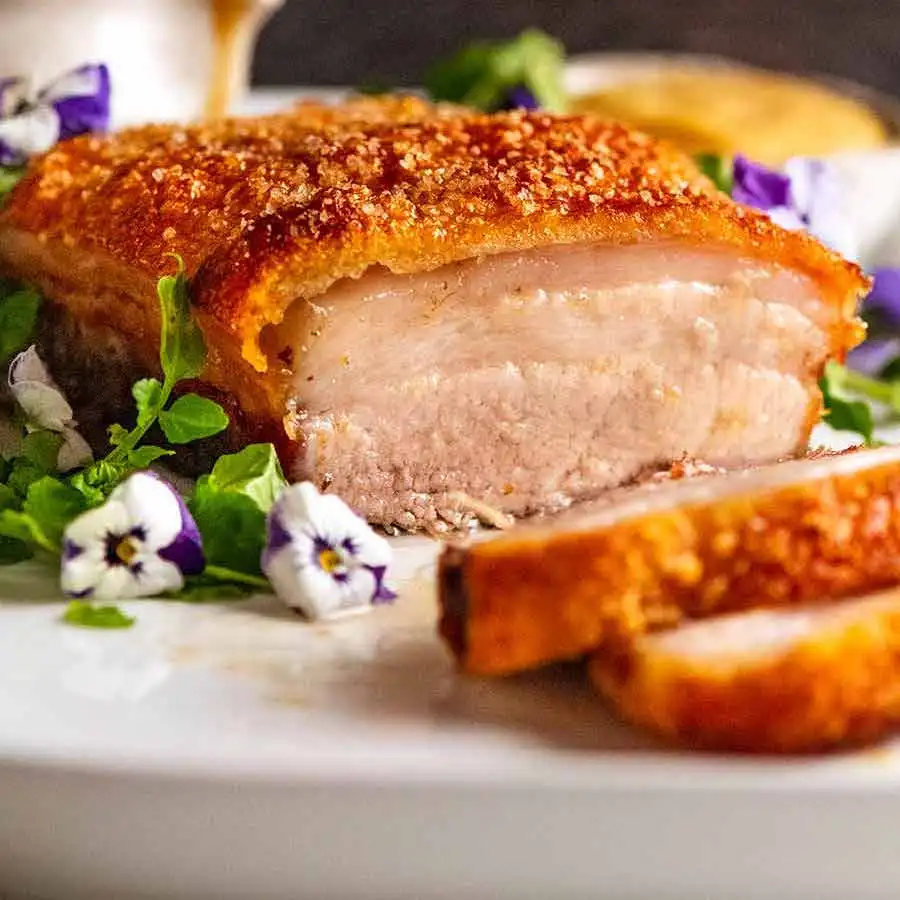
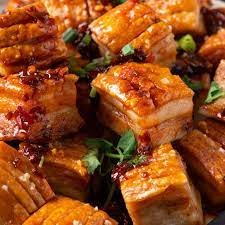
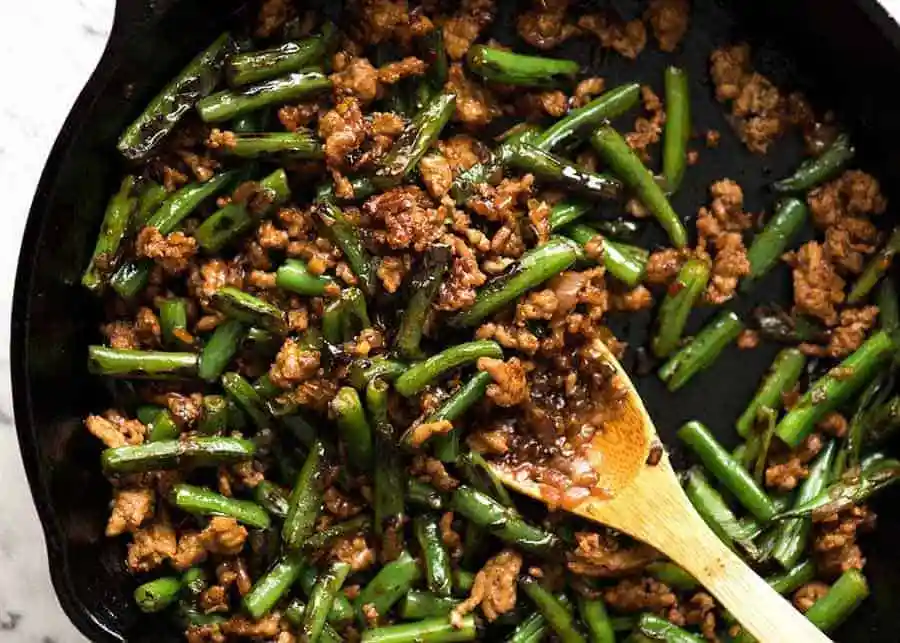
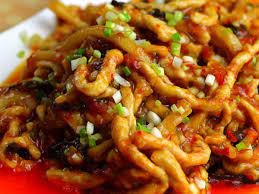

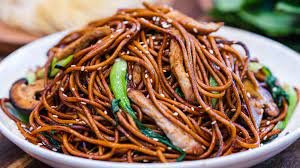
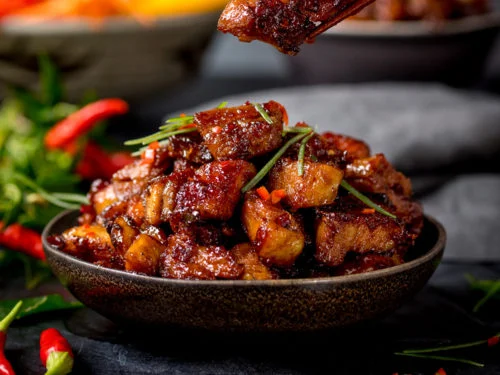
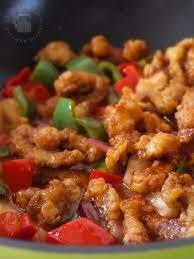
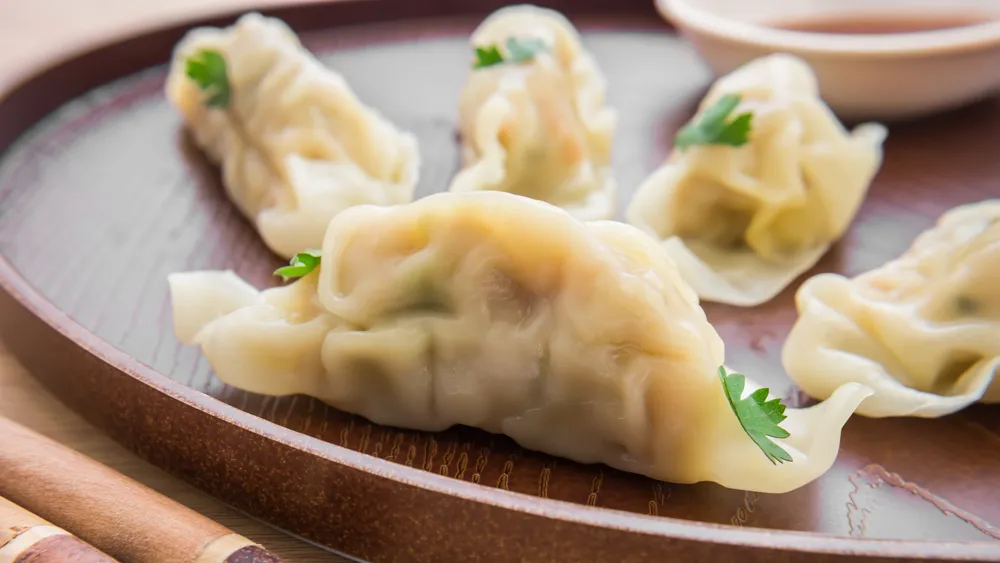

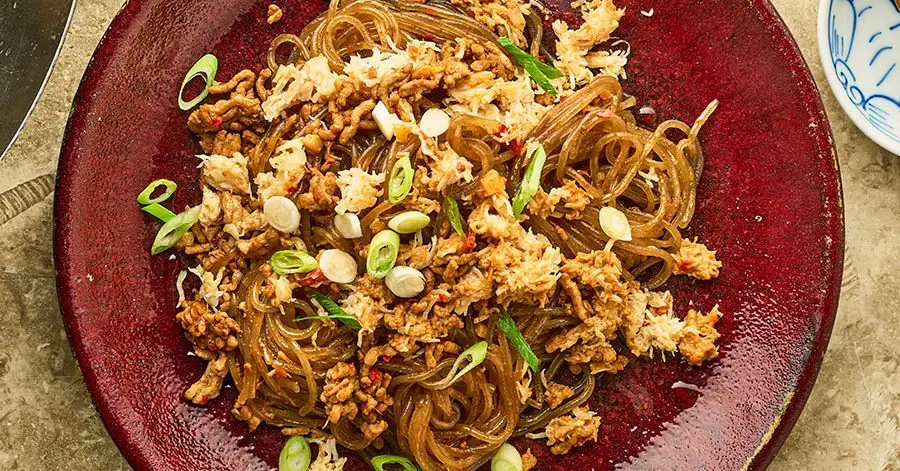

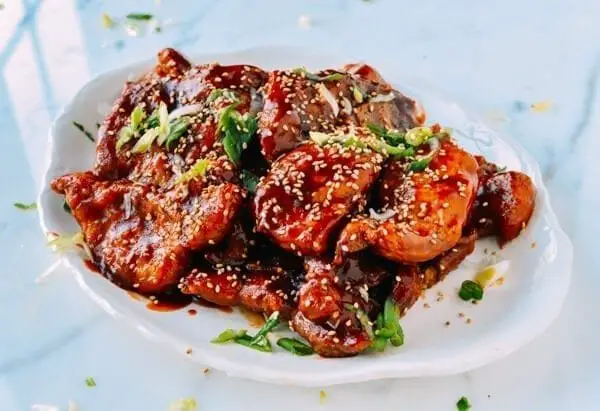
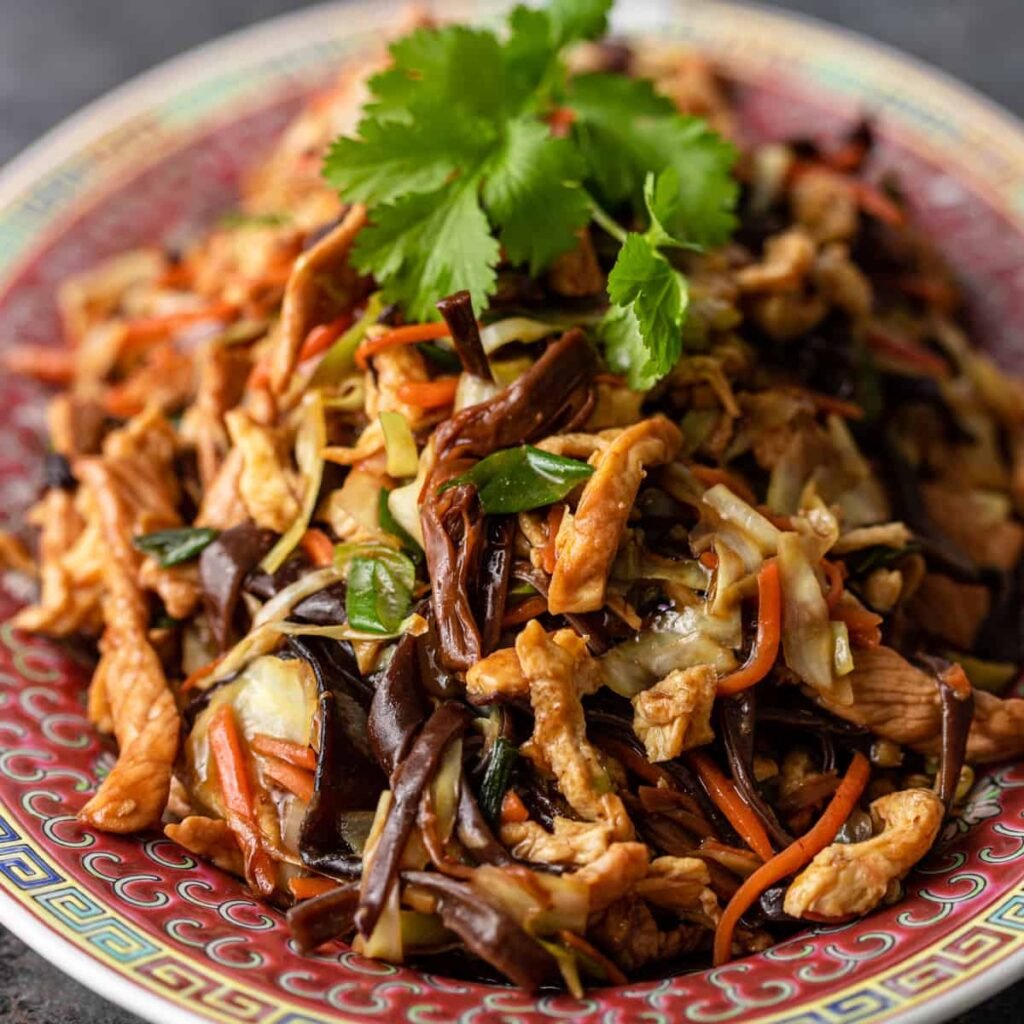

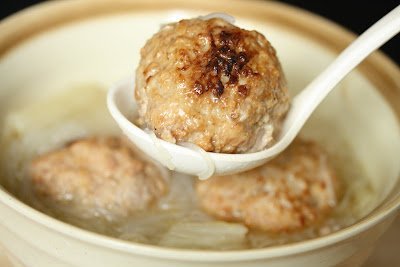
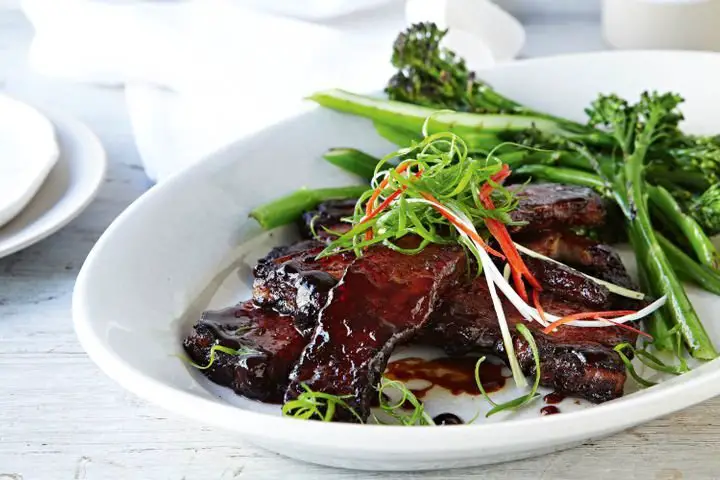

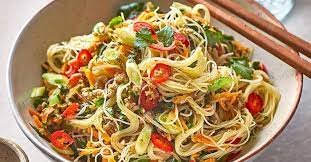

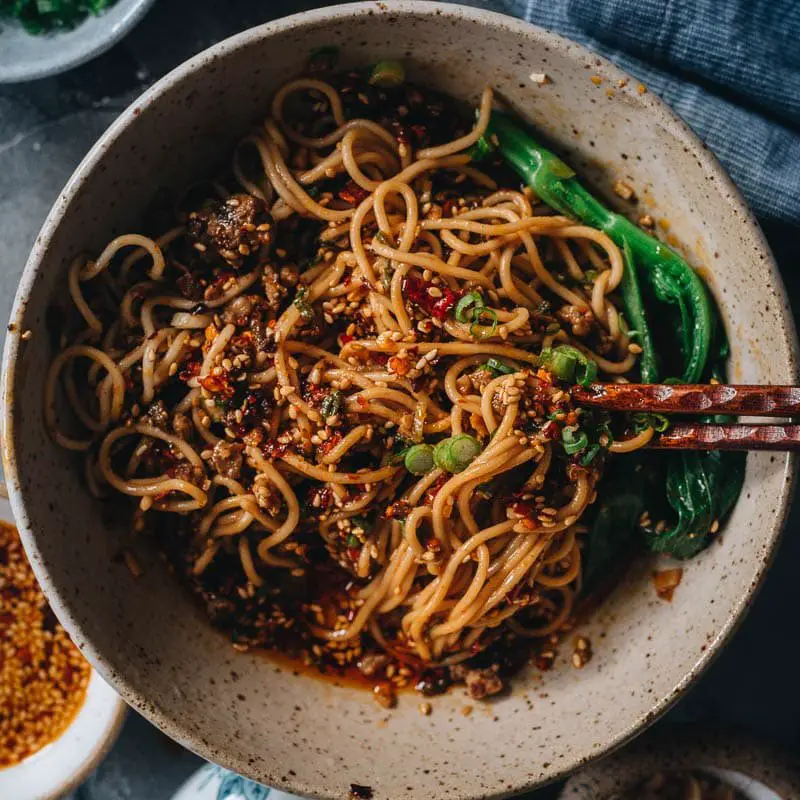

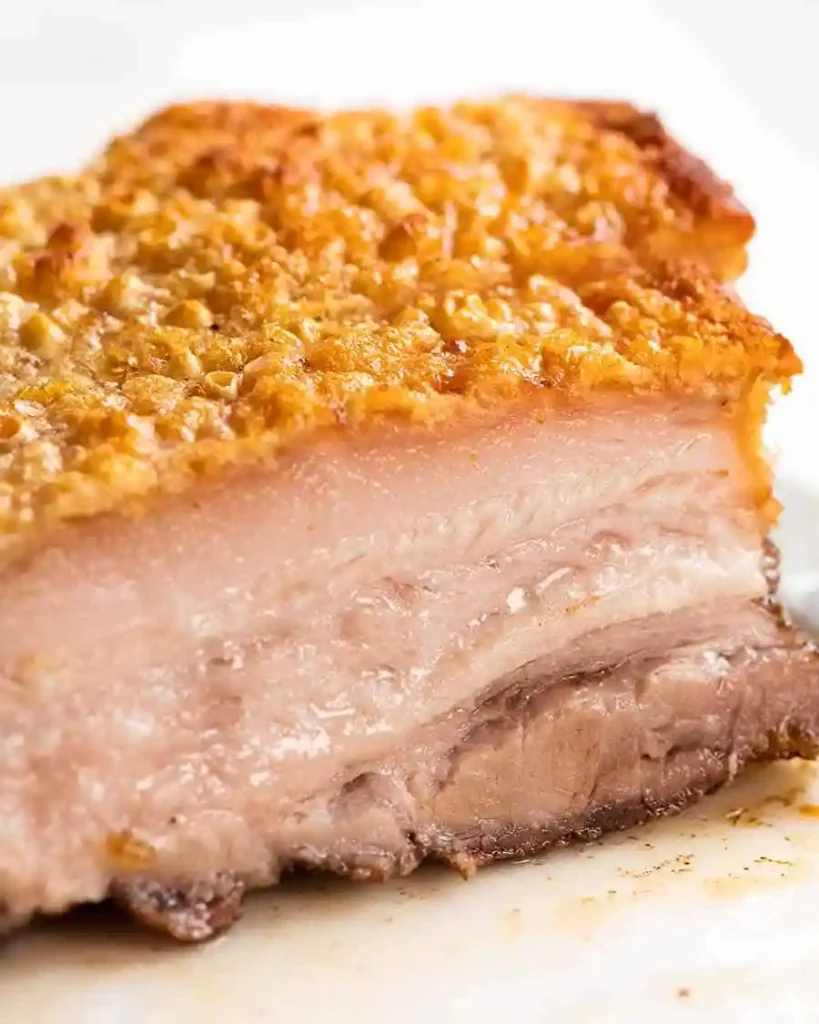

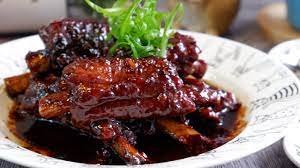
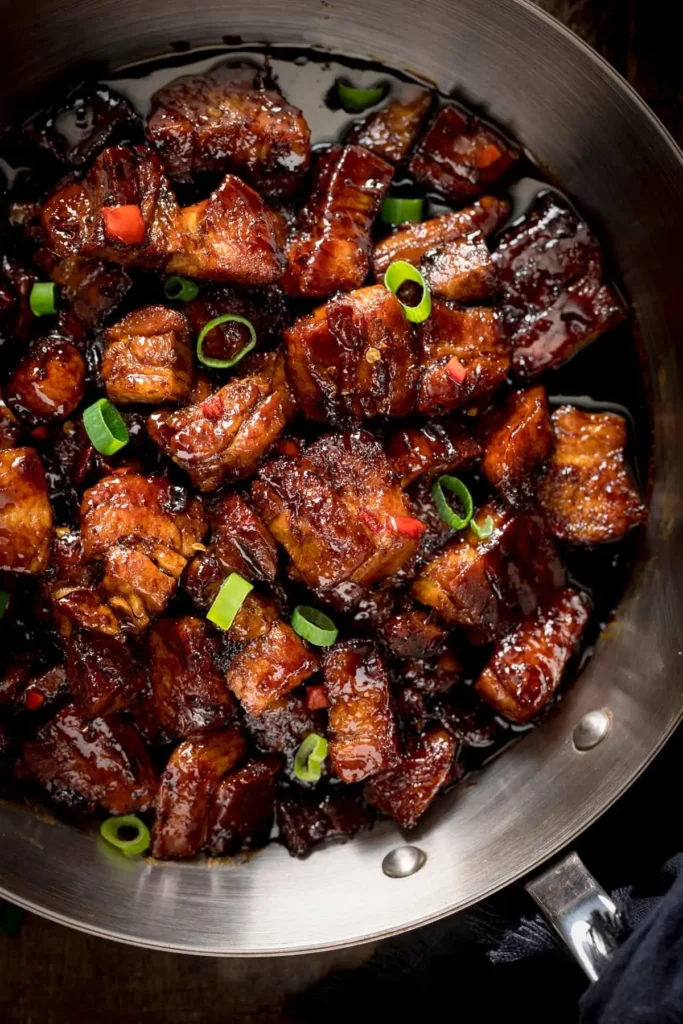
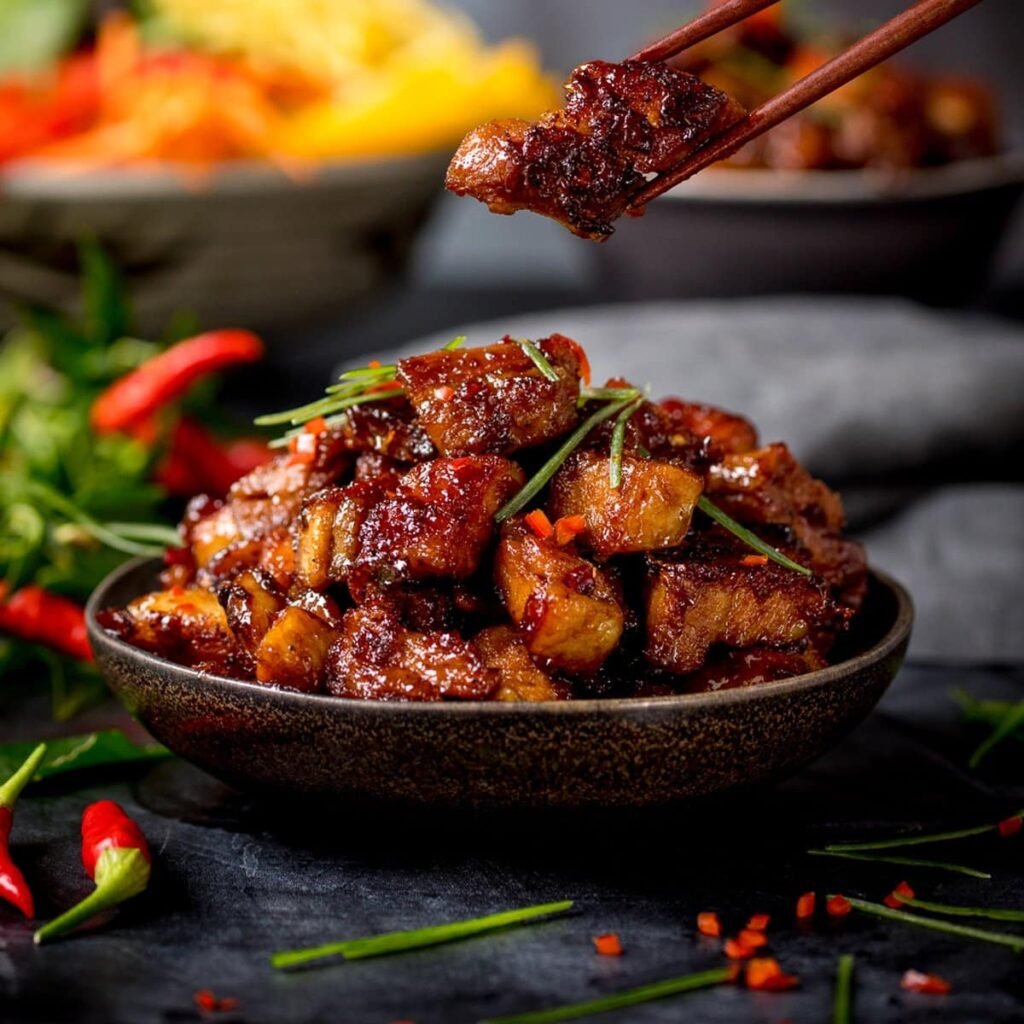
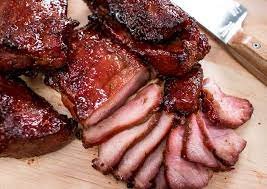
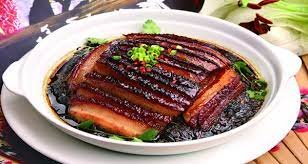

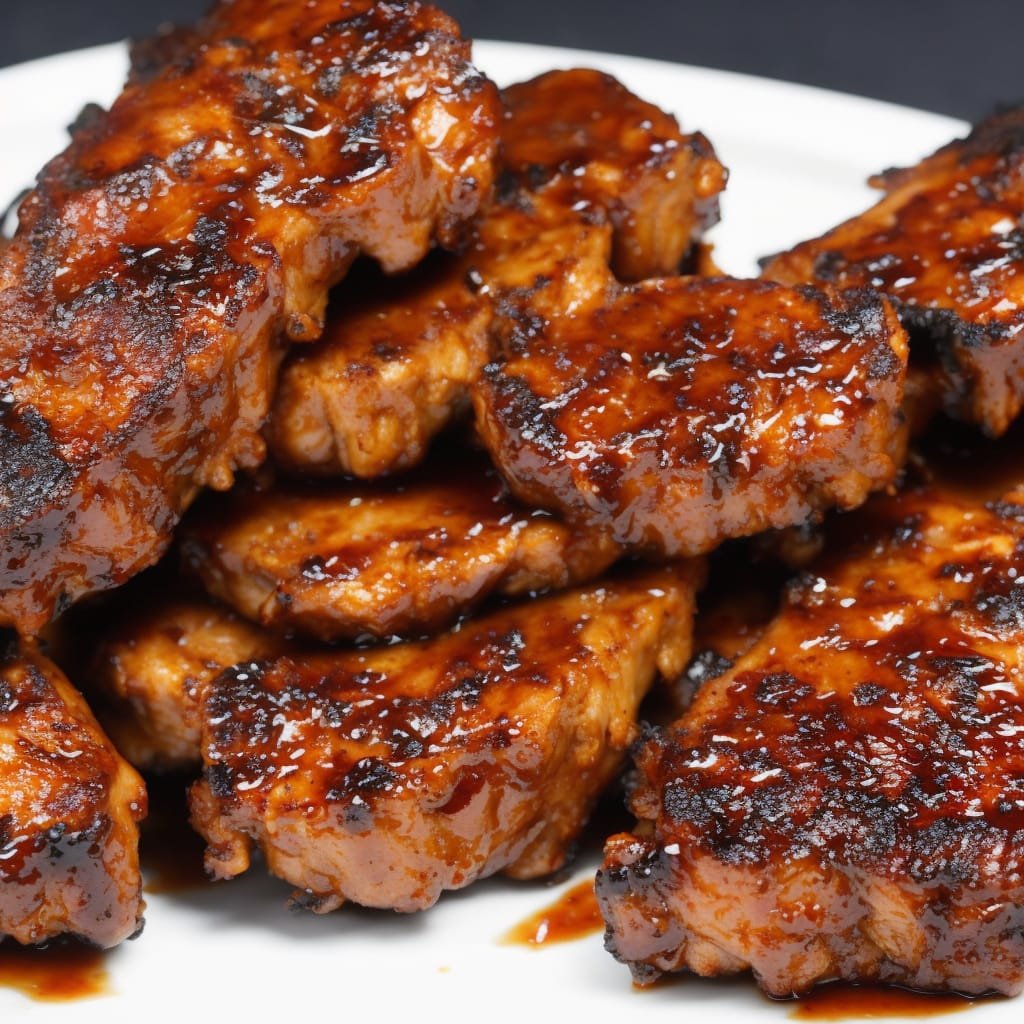

Other Articles for You
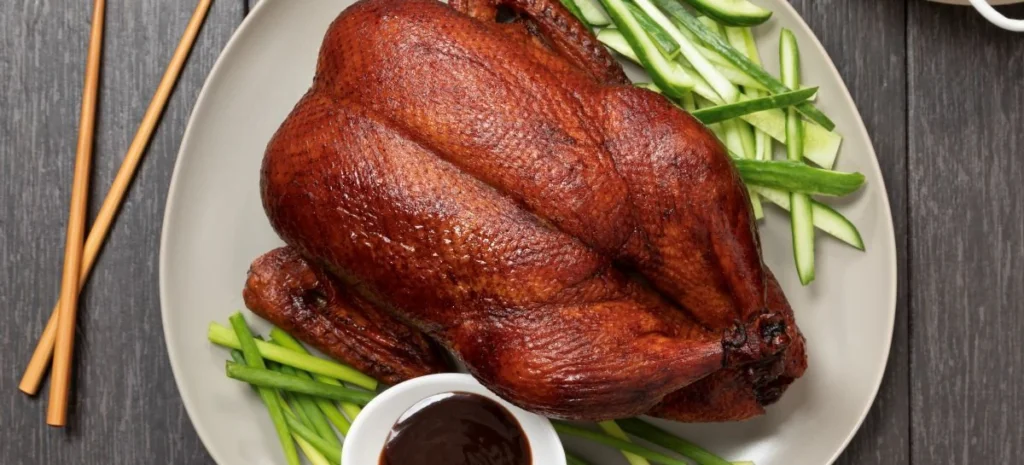

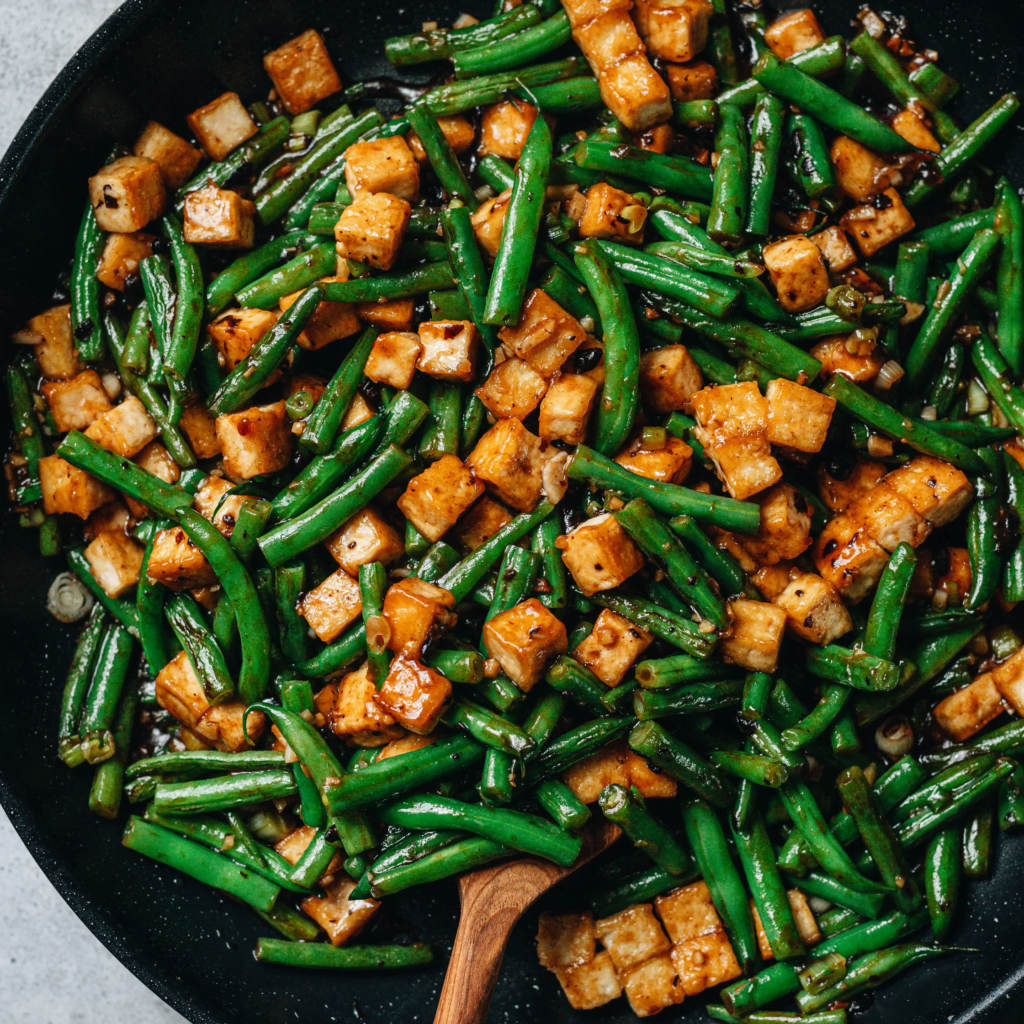


- Chinese Food – A delightful exploration
- 24 Chinese Beef Recipes
- 48 Mouthwatering Chinese Vegan Food Recipes
- 41 Irresistible Sweet Chinese Desserts
- North and South American Cuisine – A Culinary Expedition
- European Cuisine: Savor the Continent’s Best Culinary Secrets!
- African Cuisine: Discover the Bold Flavors & Global Charm!
- Asian Cuisine Unlock its Secrets – Taste, Health & Global Influence!
- Oceania Cooking: A Culinary Journey Through the Pacific
Chinese Pork Recipes – Bacon, dried shrimp & spring onion chee cheong fun rolls

History and Background:
Bacon, dried shrimp & spring onion chee cheong fun rolls are a delectable Chinese dish with a rich culinary history. Originating from the Guangdong province, this recipe is deeply rooted in Cantonese cuisine. Chee cheong fun, or rice noodle rolls, have been a staple in Cantonese dim sum culture, showcasing the region’s expertise in crafting delicate and flavorful dishes.
Chinese Pork Recipes – Bacon, dried shrimp & spring onion chee cheong fun rolls Ingredients:
- 1 cup rice flour
- 2 tablespoons tapioca starch
- 2 cups water
- 1/2 teaspoon salt
- 1 tablespoon vegetable oil
- 6 slices bacon
- 1/2 cup dried shrimp, soaked and chopped
- 4 spring onions, finely chopped
- Soy sauce for dipping
For the Sauce:
- 2 tablespoons soy sauce
- 1 tablespoon oyster sauce
- 1 teaspoon sesame oil
- 1 teaspoon sugar
- 1/2 cup water
- 1 tablespoon cornstarch
Chinese Pork Recipes – Bacon, dried shrimp & spring onion chee cheong fun rolls Recipe:
Preparation:
- Prepare the Rice Noodle Batter:
- In a bowl, mix rice flour, tapioca starch, water, and salt until well combined.
- Strain the mixture to remove any lumps.
- Stir in vegetable oil and let the batter rest for 30 minutes.
- Cooking the Bacon and Shrimp:
- In a pan, cook bacon until crispy. Remove and chop into small pieces.
- In the same pan, stir-fry chopped dried shrimp until fragrant. Set aside.
Cooking the Chee Cheong Fun Rolls:
- Steam the Rice Noodle Rolls:
- Grease a steaming tray and pour a thin layer of the rice noodle batter.
- Steam for 5-7 minutes until set.
- Assemble the Rolls:
- Lay out a steamed rice noodle sheet.
- Place a portion of the cooked bacon, dried shrimp, and chopped spring onions along one edge.
- Roll the rice noodle sheet, sealing the edges to form a tight roll.
Making the Sauce:
- Prepare the Sauce:
- In a saucepan, mix soy sauce, oyster sauce, sesame oil, sugar, water, and cornstarch.
- Cook over medium heat, stirring until the sauce thickens.
- Serve:
- Cut the chee cheong fun rolls into bite-sized pieces.
- Drizzle the prepared sauce over the rolls or use it as a dipping sauce.
- Serve the rolls warm, accompanied by extra soy sauce for dipping.
Enjoy the delightful combination of flavors and textures in this traditional Cantonese dish!
Chinese Pork Recipes – Barbecued sticky Chinese pork chops

History and Background:
Barbecued sticky Chinese pork chops have a flavorful history deeply embedded in Cantonese cuisine, specifically originating from Guangzhou in the Guangdong province of China. This dish reflects the region’s culinary expertise in combining sweet and savory flavors to create a mouthwatering experience. With its roots in traditional Chinese barbecue techniques, this recipe showcases the art of achieving the perfect balance of tenderness and a sticky, caramelized glaze.
Chinese Pork Recipes – Barbecued sticky Chinese pork chops Ingredients:
- 4 bone-in pork chops
- 1/4 cup soy sauce
- 2 tablespoons hoisin sauce
- 2 tablespoons oyster sauce
- 2 tablespoons honey
- 2 tablespoons brown sugar
- 1 tablespoon rice vinegar
- 2 teaspoons minced garlic
- 1 teaspoon minced ginger
- 1/2 teaspoon Chinese five-spice powder
- Sesame seeds and chopped green onions for garnish
For Marination:
- 1 tablespoon soy sauce
- 1 tablespoon Shaoxing wine (Chinese rice wine) or dry sherry
- 1 teaspoon sesame oil
- 1 teaspoon cornstarch
Chinese Pork Recipes – Barbecued sticky Chinese pork chops Recipe:
Marinating the Pork:
- Prepare the Pork Chops:
- Make shallow cuts on the surface of the pork chops to help the marinade penetrate.
- In a bowl, mix soy sauce, Shaoxing wine, sesame oil, and cornstarch.
- Coat the pork chops with the marinade and let them marinate for at least 30 minutes.
Making the Sticky Barbecue Sauce:
- Prepare the Barbecue Sauce:
- In a small bowl, combine soy sauce, hoisin sauce, oyster sauce, honey, brown sugar, rice vinegar, minced garlic, minced ginger, and Chinese five-spice powder.
Cooking the Pork Chops:
- Grill or Pan-Fry the Pork:
- Preheat the grill or a pan over medium-high heat.
- Grill or pan-fry the marinated pork chops for about 4-5 minutes on each side or until fully cooked.
- Glaze with Barbecue Sauce:
- Brush the barbecue sauce generously over each side of the pork chops during the last few minutes of cooking, allowing the sauce to caramelize and create a sticky coating.
Serving:
- Garnish and Serve:
- Sprinkle sesame seeds and chopped green onions over the pork chops.
- Serve the barbecued sticky Chinese pork chops hot, accompanied by steamed rice or your favorite side dishes.
Chinese Pork Recipes – Barbecue pork buns

History and Background:
Barbecue pork buns, known as “Char Siu Bao” in Cantonese, have a rich history rooted in southern Chinese cuisine, particularly originating from Guangzhou, Guangdong province. This beloved dish reflects the artistry of Cantonese dim sum and showcases the region’s expertise in crafting soft, pillowy buns filled with succulent, sweet, and savory barbecue pork. Char Siu Bao has become a staple not only in Cantonese cuisine but also a favorite worldwide, appreciated for its unique combination of flavors.
Chinese Pork Recipes – Barbecue pork buns Ingredients:
For the Barbecue Pork Filling:
- 1 cup char siu (Chinese BBQ pork), diced
- 2 tablespoons hoisin sauce
- 1 tablespoon soy sauce
- 1 tablespoon oyster sauce
- 1 tablespoon sugar
- 1 tablespoon cornstarch
- 1/4 cup water
- 1 tablespoon vegetable oil
For the Bun Dough:
- 2 1/2 teaspoons active dry yeast
- 1 cup warm water
- 3 tablespoons sugar
- 3 cups all-purpose flour
- 1 tablespoon baking powder
- 1 tablespoon vegetable oil
Chinese Pork Recipes – Barbecue pork buns Recipe:
Preparing the Barbecue Pork Filling:
- Sauté the Char Siu:
- In a pan, heat vegetable oil and sauté diced char siu until slightly caramelized.
- Prepare the Sauce:
- In a bowl, mix hoisin sauce, soy sauce, oyster sauce, sugar, cornstarch, and water.
- Add the sauce to the char siu and cook until thickened. Set aside.
Making the Bun Dough:
- Activate the Yeast:
- In a bowl, dissolve sugar in warm water and add active dry yeast. Let it sit for 5-10 minutes until frothy.
- Prepare the Dough:
- In a large mixing bowl, combine flour, baking powder, and vegetable oil.
- Gradually add the yeast mixture, kneading until a smooth dough forms.
- Allow the dough to rise in a warm place for 1-2 hours until doubled in size.
Assembling and Steaming:
- Forming Bun Shapes:
- Punch down the risen dough and divide it into small portions.
- Roll each portion into a flat circle, creating a pocket for the filling.
- Filling and Sealing:
- Place a spoonful of the char siu filling in the center of each dough circle.
- Gather the edges and pinch to seal, creating a bun shape.
- Steaming the Buns:
- Arrange the filled buns in a steamer, leaving space for expansion.
- Steam for 15-20 minutes until the buns are puffed and cooked.
Serving:
- Serve and Enjoy:
- Remove the barbecue pork buns from the steamer.
- Serve them warm, and enjoy the delightful combination of soft, fluffy buns and flavorful char siu filling.
Experience the authentic taste of Cantonese dim sum with these homemade barbecue pork buns!
Chinese Pork Recipes – Braised pork with plums

History and Background:
Braised pork with plums, or “Mei Gan Cai Kou Rou” in Mandarin, has its roots in Chinese cuisine, particularly in the Jiangsu province. This dish is a classic representation of Jiangsu’s culinary tradition, known for its delicate flavors and sophisticated techniques. The combination of tender braised pork and the sweet and tart essence of plums creates a harmonious balance that exemplifies the region’s commitment to culinary finesse.
Chinese Pork Recipes – Braised pork with plums Ingredients:
- 1.5 pounds pork belly, cut into bite-sized pieces
- 1/2 cup Mei Gan Cai (preserved mustard greens), rinsed and chopped
- 1 cup fresh plums, pitted and halved
- 2 tablespoons vegetable oil
- 3 slices ginger
- 2 cloves garlic, minced
- 2 tablespoons Shaoxing wine (Chinese rice wine)
- 2 tablespoons light soy sauce
- 1 tablespoon dark soy sauce
- 1 tablespoon oyster sauce
- 1 tablespoon sugar
- 2 cups water
- Green onions for garnish
For Marination:
- 1 tablespoon Shaoxing wine
- 1 tablespoon light soy sauce
- 1 teaspoon cornstarch
Chinese Pork Recipes – Braised pork with plums Recipe
Marinating the Pork:
- Prepare the Pork:
- Marinate the pork belly pieces with Shaoxing wine, light soy sauce, and cornstarch. Let it marinate for at least 30 minutes.
Braising the Pork with Plums:
- Browning the Pork:
- Heat vegetable oil in a wok or deep pan over medium heat.
- Brown the marinated pork pieces until they develop a golden color.
- Aromatics and Sauces:
- Add sliced ginger and minced garlic to the browned pork. Sauté until fragrant.
- Pour in Shaoxing wine, light soy sauce, dark soy sauce, and oyster sauce. Stir well.
- Adding Mei Gan Cai and Plums:
- Incorporate Mei Gan Cai (preserved mustard greens) into the mixture.
- Gently place halved fresh plums around the pork.
- Braising:
- Add sugar and pour water into the wok. Bring the mixture to a boil.
- Reduce heat to low, cover, and simmer for 1.5 to 2 hours, or until the pork is tender and the flavors meld.
Serving:
- Garnish and Serve:
- Garnish the braised pork with chopped green onions.
- Serve the braised pork with plums over steamed rice, allowing the savory and sweet flavors to shine.
Enjoy this delightful Jiangsu-inspired dish that perfectly balances the richness of pork with the bright notes of plums!
Chinese Pork Recipes – Char siu (Chinese BBQ pork)

History and Background:
Char siu, or Chinese BBQ pork, boasts a rich history dating back to ancient China, with its roots deeply embedded in Cantonese cuisine. Originating from the Guangdong province, char siu has evolved over centuries, becoming a signature dish in Cantonese barbecue shops and dim sum restaurants. The preparation involves marinating pork in a sweet and savory mixture, resulting in a distinct red exterior and a flavorful, tender interior. Char siu is not only enjoyed on its own but also serves as a key ingredient in various Cantonese dishes.
Chinese Pork Recipes – Char siu Ingredients:
- 1 pound pork shoulder or pork belly, thinly sliced or cut into strips
- 2 tablespoons hoisin sauce
- 2 tablespoons soy sauce
- 2 tablespoons honey
- 2 tablespoons Chinese rice wine or dry sherry
- 1 tablespoon oyster sauce
- 1 tablespoon brown sugar
- 1 teaspoon Chinese five-spice powder
- 2 cloves garlic, minced
- 1 teaspoon ginger, grated
- Red food coloring (optional for traditional appearance)
Chinese Pork Recipes – Char siu Recipe:
Marinating the Pork:
- Prepare the Marinade:
- In a bowl, mix hoisin sauce, soy sauce, honey, Chinese rice wine, oyster sauce, brown sugar, Chinese five-spice powder, minced garlic, and grated ginger.
- Optionally, add red food coloring for the traditional char siu appearance.
- Marinate the Pork:
- Coat the pork slices thoroughly with the prepared marinade.
- Cover and refrigerate for at least 4 hours or preferably overnight for maximum flavor absorption.
Cooking Char Siu:
- Preheat and Roast:
- Preheat the oven to 375°F (190°C).
- Place the marinated pork on a rack over a baking pan to catch drippings.
- Roast for 25-30 minutes, basting with the remaining marinade every 10 minutes.
- Broil for Char:
- Turn on the broiler for the last 5 minutes to char the edges slightly, giving the char siu its characteristic appearance.
Serving:
- Slice and Serve:
- Allow the char siu to rest for a few minutes before slicing into thin pieces.
- Serve the Chinese BBQ pork slices over steamed rice, in noodles, or as a delightful filling for buns.
- Enjoy:
- Indulge in the succulent, flavorful goodness of homemade char siu, savoring the perfect blend of sweet, savory, and smoky notes.
Embrace the culinary heritage of Cantonese cuisine with this classic and delicious char siu recipe.
Chinese Pork Recipes – Chinese braised pork with double spring onions

History and Background:
Braised pork with double spring onions, known as “Conghua Baicai Shuangcong Rou” in Mandarin, has its roots in Guangdong province, specifically in Conghua city. This dish exemplifies the regional culinary excellence, combining the richness of braised pork with the freshness of double spring onions. Conghua, known for its fertile land and diverse agriculture, contributes to the dish’s vibrant flavors, making it a celebrated part of Guangdong’s culinary heritage.
Chinese Pork Recipes – Chinese braised pork with double spring onions Ingredients
- 1.5 pounds pork belly, cut into bite-sized cubes
- 1 cup light soy sauce
- 1/2 cup dark soy sauce
- 1/4 cup Shaoxing wine (Chinese rice wine)
- 2 tablespoons oyster sauce
- 2 tablespoons sugar
- 5 cloves garlic, minced
- 1 tablespoon ginger, grated
- 4 green onions (spring onions), white and green parts separated and sliced
- 1 cup chicken broth or water
- 2 tablespoons vegetable oil
Chinese Pork Recipes – Braised pork with double spring onions Recipe
Marinating the Pork:
- Marinate the Pork:
- In a bowl, combine pork cubes with light soy sauce, dark soy sauce, Shaoxing wine, oyster sauce, sugar, minced garlic, grated ginger, and the sliced white parts of green onions.
- Let it marinate for at least 30 minutes, allowing the flavors to infuse.
Braising the Pork:
- Sauté and Brown:
- Heat vegetable oil in a wok or deep pan over medium heat.
- Sauté the marinated pork until browned on all sides.
- Adding Broth and Spring Onions:
- Pour in chicken broth (or water) to deglaze the pan and add depth to the braising liquid.
- Introduce the sliced green parts of the spring onions to the mixture.
- Braising:
- Bring the liquid to a simmer, cover, and let the pork braise for 1.5 to 2 hours, or until the pork is tender and the sauce thickens.
Serving:
- Garnish and Serve:
- Garnish the dish with double spring onions.
- Serve the dish hot over steamed rice, allowing the savory and aromatic flavors to take center stage.
- Enjoy:
- Delight in the taste of tender braised pork complemented by the freshness of double spring onions, embodying the culinary essence of Guangdong province.
Immerse yourself in the flavors of Guangdong with this delectable Chinese braised pork dish.
Chinese Pork Recipes – Pork one-pot

History and Background:
“Hong Shao Rou” (Mandarin), has a rich history in Chinese cuisine, particularly originating from the Jiangsu province. This dish showcases the region’s emphasis on slow cooking and braising techniques.
Jiangsu, with its ancient culinary traditions, contributes to the unique flavor profile of this hearty and comforting one-pot dish. One-pot represents a harmonious balance of flavors and textures, making it a cherished part of Jiangsu’s culinary heritage.
Ingredients:
- 2 pounds pork belly, cut into chunks
- 1/2 cup Shaoxing wine (Chinese rice wine)
- 1/4 cup soy sauce
- 2 tablespoons dark soy sauce
- 1/4 cup rock sugar or granulated sugar
- 5 slices ginger
- 4 green onions, cut into 2-inch sections
- 2 star anise
- 2 cinnamon sticks
- 3 dried red chilies (optional)
- 1 tablespoon vegetable oil
- 2 cups water or chicken broth
- Salt and white pepper to taste
Recipe:
Marinating the Pork:
- Marinate the Pork:
- In a bowl, combine pork chunks with Shaoxing wine, soy sauce, and dark soy sauce. Let it marinate for at least 30 minutes.
Sautéing and Braising:
- Sauté Aromatics:
- Heat vegetable oil in a large pot or Dutch oven over medium heat.
- Add ginger slices, green onion sections, star anise, cinnamon sticks, and dried red chilies (if using). Sauté until fragrant.
- Browning the Pork:
- Add the marinated pork to the pot, browning each piece on all sides.
- Adding Sugar and Liquids:
- Sprinkle rock sugar (or granulated sugar) over the pork and allow it to caramelize.
- Pour in water or chicken broth, ensuring it covers the pork.
Slow Cooking:
- Simmering and Braising:
- Bring the liquid to a simmer, then reduce the heat to low.
- Cover the pot and let it simmer for 1.5 to 2 hours, or until the pork is tender and the sauce has thickened.
- Seasoning:
- Season with salt and white pepper to taste, adjusting the flavors as needed.
Serving:
- Garnish and Serve:
- Garnish the dish with additional green onions.
- Serve the dish hot over steamed rice, allowing the rich, flavorful sauce to complement the succulent pork.
- Enjoy:
- Savor the comforting and aromatic goodness, a testament to the culinary traditions of Jiangsu province.
Immerse yourself in the warmth and depth of flavors with this traditional Chinese recipe.
Chinese Pork Recipes – Chinese pork ribs

History and Background:
Chinese ribs have a diverse history intertwined with the culinary traditions of various regions in China. While the exact origins are challenging to pinpoint, the dish has become a staple across the country, reflecting the versatility of Chinese cuisine. Different provinces contribute unique twists, sauces, and flavors to this popular dish. From sweet and sticky barbecue-style ribs to savory braised variations, the sish is a showcase the rich tapestry of flavors that define Chinese cooking.
Chinese Pork Recipes – Chinese pork ribs Ingredients:
- 2 pounds pork ribs, preferably baby back ribs
- 1/4 cup soy sauce
- 2 tablespoons hoisin sauce
- 2 tablespoons oyster sauce
- 2 tablespoons honey
- 2 tablespoons Shaoxing wine (Chinese rice wine) or dry sherry
- 1 tablespoon sesame oil
- 2 cloves garlic, minced
- 1 teaspoon ginger, grated
- 1/2 teaspoon Chinese five-spice powder
- Sesame seeds and chopped green onions for garnish (optional)
Chinese Pork Recipes – Chinese pork ribs Recipe:
Marinating the Pork Ribs:
- Prepare the Ribs:
- If needed, remove the membrane from the back of the ribs for better flavor absorption.
- Cut the ribs into individual pieces for easy marination.
- Marinate the Ribs:
- In a bowl, mix soy sauce, hoisin sauce, oyster sauce, honey, Shaoxing wine, sesame oil, minced garlic, grated ginger, and Chinese five-spice powder.
- Coat the ribs thoroughly with the marinade, ensuring each piece is well-covered.
- Marinate for at least 2 hours or, ideally, overnight in the refrigerator.
Cooking the Chinese Pork Ribs:
- Baking or Grilling:
- Preheat the oven to 375°F (190°C) or prepare the grill.
- If baking, place the marinated ribs on a baking sheet. If grilling, place them directly on the grill grates.
- Cook for approximately 30-40 minutes, turning occasionally, until the ribs are cooked through and caramelized.
- Garnish and Serve:
- Optionally, sprinkle sesame seeds and chopped green onions over the ribs for garnish.
- Serve the Chinese pork ribs hot, either as an appetizer or a main course, accompanied by rice or your favorite side dishes.
- Enjoy:
- Dive into the flavorful and succulent experience of Chinese pork ribs, appreciating the regional nuances that make this dish a beloved part of Chinese cuisine.
Chinese Pork Recipes – Burger

History and Background:
The Chinese pork burger, known as “Rou Jia Mo” in Mandarin, traces its origins to the Shaanxi province of China. This iconic street food dates back over a thousand years and is recognized for its historical significance. Initially developed during the Qin Dynasty, Rou Jia Mo has evolved to become a cherished representation of Shaanxi cuisine. The dish features minced and spiced pork enclosed in a Chinese-style flatbread, providing a delightful fusion of flavors and textures.
Chinese Pork Recipes – Chinese Pork Burger Ingredients
- 1 pound ground pork
- 1/2 cup green onions, finely chopped
- 2 cloves garlic, minced
- 1 tablespoon ginger, grated
- 2 tablespoons soy sauce
- 1 tablespoon hoisin sauce
- 1 teaspoon Chinese five-spice powder
- 1/2 teaspoon sugar
- 1/4 teaspoon white pepper
- 1/4 cup water
- Chinese-style flatbreads or buns
- Vegetable oil for cooking
- Optional toppings: lettuce, cucumber, cilantro, and chili sauce
Chinese Pork Recipes – Chinese Pork Burger Recipe
Preparing the Pork Mixture:
- Combine Ingredients:
- In a bowl, mix ground pork, chopped green onions, minced garlic, grated ginger, soy sauce, hoisin sauce, Chinese five-spice powder, sugar, white pepper, and water.
- Ensure the ingredients are evenly incorporated.
Cooking the Pork:
- Cook the Pork Mixture:
- Heat a skillet over medium-high heat and add vegetable oil.
- Cook the pork mixture, breaking it apart with a spatula, until fully browned and cooked through.
Assembling the Chinese Pork Burger:
- Prepare the Flatbreads:
- Warm the Chinese flatbreads or buns in the oven or on a skillet.
- Assemble the Burgers:
- Spoon the cooked pork mixture onto each flatbread.
- Add optional toppings such as lettuce, cucumber, cilantro, and chili sauce according to preference.
Serving:
- Serve and Enjoy:
- Fold the flatbread or bun to encase the pork and toppings.
- Serve the Chinese pork burgers hot, savoring the fusion of flavors and the unique texture of the flatbread.
- Indulge:
- Delight in the satisfying taste of the Chinese pork burger, appreciating the historical and culinary legacy of this Shaanxi street food classic.
Chinese Pork Recipes – Crisp Chinese pork belly

History and Background:
Crisp Chinese pork belly, also known as “Siu Yuk” in Cantonese, is a beloved dish with roots deeply embedded in Cantonese cuisine. Originating from the Guangdong province of China, Siu Yuk has become a culinary icon, known for its contrasting textures of crispy skin and succulent meat. The dish is a testament to the Cantonese expertise in roasting techniques, with its history dating back to traditional Chinese festivals and celebrations.
Chinese Pork Recipes – Crisp Chinese pork belly Ingredients
- 2 pounds pork belly, skin-on
- 1 tablespoon coarse salt
- 1 tablespoon rice vinegar
- 1 tablespoon Shaoxing wine (Chinese rice wine)
- 1 tablespoon five-spice powder
- 1 teaspoon white pepper
- 1 teaspoon sugar
- 1/2 cup boiling water
Chinese Pork Recipes – Crisp Chinese pork belly Recipe
Preparing the Pork Belly:
- Score the Skin:
- Place the pork belly skin-side up and use a sharp knife to score the skin deeply, creating a diamond pattern without cutting into the meat.
- Preboiling the Pork:
- In a large pot, bring enough water to a boil to submerge the pork belly.
- Carefully lower the pork into the boiling water for 5-10 minutes to blanch. This helps achieve a crispy skin.
Marinating the Pork Belly:
- Marinate with Salt and Vinegar:
- Pat the pork belly dry with paper towels.
- Rub the skin with coarse salt and rice vinegar. Let it air-dry for at least 2 hours or overnight in the refrigerator.
- Five-Spice Rub:
- Mix Shaoxing wine, five-spice powder, white pepper, and sugar in a bowl.
- Rub the mixture evenly over the meat side of the pork belly.
Roasting the Crisp Pork Belly:
- Preheat the Oven:
- Preheat the oven to 425°F (220°C).
- Boiling Water Bath:
- Place a rack in a roasting pan and pour boiling water into the pan.
- Position the pork belly on the rack, ensuring it doesn’t touch the water.
- Roasting:
- Roast the pork belly in the preheated oven for about 45-60 minutes or until the skin is golden and crispy.
Serving:
- Rest and Slice:
- Allow the crispy Chinese pork belly to rest for a few minutes before slicing into bite-sized pieces.
- Serve and Enjoy:
- Serve the Siu Yuk hot, savoring the contrast of the crispy skin and tender meat.
- Appreciate the Crispy Delight:
- Delight in the authentic flavors and textures of Crisp Chinese Pork Belly, a true embodiment of Cantonese culinary mastery.
Chinese Pork Recipes – Crossing the bridge noodles

History and Background:
Crossing the Bridge Noodles, or “Guoqiao Mixian” in Mandarin, is a traditional Yunnanese dish with a storied history. Originating from the Yunnan province in southwestern China, this iconic noodle soup has been enjoyed for centuries.
Legend has it that a scholar’s wife invented the dish, creating a unique way to keep the broth and ingredients separate until served. Today, Crossing the Bridge Noodles is celebrated for its interactive dining experience, featuring a hot pot of broth and various fresh ingredients to assemble at the table.
Chinese Pork Recipes – Crossing the bridge noodles Ingredients
For the Broth:
- 6 cups chicken broth
- 2 tablespoons soy sauce
- 1 tablespoon Shaoxing wine (Chinese rice wine)
- 1 tablespoon sesame oil
- Salt and white pepper to taste
For the Noodles and Toppings:
- Rice noodles (mixian)
- Thinly sliced raw meat (chicken, beef, or pork)
- Various vegetables (shiitake mushrooms, bok choy, bean sprouts, etc.)
- Tofu, sliced
- Wood ear mushrooms, soaked and sliced
- Condiments: minced garlic, chopped scallions, cilantro, and chili oil
Chinese Pork Recipes – Crossing the bridge noodles Recipe
Preparing the Broth:
- Boil the Chicken Broth:
- In a pot, bring the chicken broth to a boil.
- Season the Broth:
- Add soy sauce, Shaoxing wine, sesame oil, salt, and white pepper to the boiling broth. Adjust seasoning to taste.
Preparing Ingredients for Assembly:
- Prepare Rice Noodles:
- Cook the rice noodles according to package instructions. Drain and set aside.
- Slice Raw Meat:
- Thinly slice raw meat of choice (chicken, beef, or pork) and arrange on a plate.
- Prepare Vegetables and Toppings:
- Slice vegetables such as shiitake mushrooms, bok choy, tofu, and soaked wood ear mushrooms.
- Arrange condiments like minced garlic, chopped scallions, cilantro, and chili oil.
Assembling at the Table:
- Set Up Hot Pot:
- Bring the seasoned broth to the table, placing it on a portable burner or hot plate.
- Individual Assembly:
- Each diner assembles their bowl by adding rice noodles, raw meat, vegetables, and toppings of choice to the hot pot.
- Cooking in the Broth:
- Allow the ingredients to cook in the hot broth, ensuring the meat is fully cooked and the vegetables are tender.
Serving:
- Garnish and Serve:
- Garnish the individual bowls with additional condiments as desired.
- Enjoy Interactive Dining:
- Serve Crossing the Bridge Noodles hot, enjoying the interactive and customizable nature of this Yunnanese dish.
Experience the unique joy of assembling and enjoying Crossing the Bridge Noodles, a culinary gem from the diverse Yunnan province.
Chinese Pork Recipes – Dan Dan Noodles

History and Background:
Dan Dan Noodles, also known as “Dandan Mian” in Mandarin, have a flavorful history originating from Sichuan province in southwestern China. The dish is named after the traditional carrying pole (“dan dan”) used by street vendors who sold the noodles. Dan Dan Noodles are renowned for their spicy, savory, and numbing flavors, typical of Sichuan cuisine. The dish has evolved over centuries, becoming a staple in Chinese culinary culture and gaining international popularity.
Chinese Pork Recipes – Dan Dan Noodles Ingredients
Sauce:
- 3 tablespoons soy sauce
- 2 tablespoons Chinese black vinegar
- 1 tablespoon sesame paste
- 1 tablespoon chili oil
- 1 tablespoon Sichuan peppercorn oil
- 1 tablespoon sugar
- 2 cloves garlic, minced
- 1 teaspoon ginger, grated
- 1 teaspoon doubanjiang (broad bean chili paste)
The Noodles and Toppings:
- 8 ounces Chinese egg noodles or wheat noodles
- 1/2 pound ground pork
- 2 tablespoons vegetable oil
- 2 green onions, finely chopped
- Crushed peanuts for garnish
- Chopped cilantro for garnish
Chinese Pork Recipes – Dan Dan Noodles Recipe:
Preparing the Sauce:
- Combine Sauce Ingredients:
- In a bowl, mix soy sauce, Chinese black vinegar, sesame paste, chili oil, Sichuan peppercorn oil, sugar, minced garlic, grated ginger, and doubanjiang. Set aside.
Cooking the Noodles:
- Cook Egg Noodles:
- Cook Chinese egg noodles according to package instructions. Drain and set aside.
Preparing the Toppings:
- Cook Ground Pork:
- In a pan, heat vegetable oil over medium heat.
- Add ground pork and cook until browned, breaking it apart with a spatula.
- Add Green Onions:
- Add chopped green onions to the cooked pork, sautéing until fragrant.
Assembling Dan Dan Noodles:
- Mix Noodles and Sauce:
- Toss the cooked noodles with the prepared sauce, ensuring even coating.
- Serve with Toppings:
- Divide the sauced noodles into serving bowls.
- Top with the cooked ground pork and green onions.
- Garnish and Enjoy:
- Garnish Dan Dan Noodles with crushed peanuts and chopped cilantro.
- Serve Hot:
- Serve Dan Dan Noodles hot, savoring the bold and spicy flavors characteristic of Sichuan cuisine.
Experience the authentic taste of Sichuan with Dan Dan Noodles, a dish that beautifully encapsulates the bold and complex flavors of this renowned Chinese region.
Chinese Pork Recipes – Egg Foo Young with Ground Pork

History and Background:
Egg Foo Young with Ground Pork is a classic Chinese-American dish that has its roots in Cantonese cuisine. The name “Egg Foo Young” is a Cantonese pronunciation of the dish’s Chinese name, which roughly translates to “Huatun” or “Fotun,” meaning “blossoming egg.” Originating from Guangdong province, Egg Foo Young reflects the culinary adaptation of Chinese immigrants in the United States during the mid-20th century. It has since become a beloved staple in Chinese-American cuisine, characterized by its savory egg patties filled with a variety of ingredients.
Chinese Pork Recipes – Egg Foo Young with Ground Pork Ingredients
For the Egg Patties:
- 6 large eggs
- 1/2 cup ground pork
- 1/4 cup diced onions
- 1/4 cup diced bell peppers (red and green)
- 1/4 cup diced mushrooms
- 1/4 cup bean sprouts
- 2 tablespoons chopped green onions
- 2 tablespoons soy sauce
- 1 tablespoon oyster sauce
- 1 teaspoon sesame oil
- 1/2 teaspoon sugar
- 1/4 teaspoon white pepper
- Vegetable oil for frying
For the Gravy (Optional):
- 1 cup chicken or vegetable broth
- 2 tablespoons soy sauce
- 1 tablespoon oyster sauce
- 1 tablespoon cornstarch dissolved in 2 tablespoons water
- Salt and white pepper to taste
Chinese Pork Recipes – Egg Foo Young with Ground Pork Recipe
Preparing the Egg Patties:
- Whisk Eggs:
- In a bowl, whisk the eggs until well beaten.
- Mix Ingredients:
- Add ground pork, diced onions, diced bell peppers, diced mushrooms, bean sprouts, chopped green onions, soy sauce, oyster sauce, sesame oil, sugar, and white pepper to the beaten eggs. Mix well.
- Cooking Egg Patties:
- Heat vegetable oil in a skillet over medium heat.
- Ladle portions of the egg mixture into the skillet, creating individual patties. Cook until golden brown on both sides.
Preparing the Gravy (Optional):
- Combine Ingredients:
- In a separate saucepan, combine chicken or vegetable broth, soy sauce, oyster sauce, and the cornstarch-water mixture.
- Cook over medium heat, stirring continuously, until the gravy thickens. Season with salt and white pepper to taste.
Serving:
- Plate Egg Foo Young:
- Place the cooked Egg Foo Young patties on a serving plate.
- Pour Gravy (Optional):
- If desired, pour the prepared gravy over the Egg Foo Young patties.
- Garnish and Serve:
- Garnish with additional chopped green onions.
- Serve Egg Foo Young hot with steamed rice.
- Enjoy:
- Savor the delightful flavors of Egg Foo Young with Ground Pork, appreciating its Cantonese-American heritage and comforting taste.
Chinese Pork Recipes – Fragrant pork & lemongrass noodles
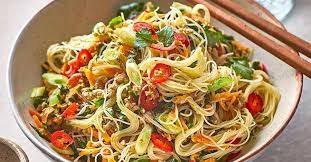
History and Background:
Fragrant Pork & Lemongrass Noodles is a dish that draws inspiration from the vibrant flavors of Southeast Asian cuisine, particularly the fusion of Chinese and Vietnamese influences. While not strictly Chinese, the recipe has become popular in various Chinese communities, showcasing the adaptability and cross-cultural nature of Chinese cuisine.
The dish combines fragrant lemongrass with succulent pork, creating a harmonious blend of savory and aromatic notes. This culinary fusion reflects the dynamic cultural exchanges that have shaped Chinese cuisine over the centuries.
Chinese Pork Recipes – Fragrant pork & lemongrass noodles Ingredients
For the Marinade:
- 1 pound pork tenderloin, thinly sliced
- 3 tablespoons soy sauce
- 2 tablespoons fish sauce
- 1 tablespoon oyster sauce
- 1 tablespoon sugar
- 1 teaspoon sesame oil
- 2 cloves garlic, minced
- 1 stalk lemongrass, finely chopped
For the Noodles:
- 8 ounces rice noodles, cooked according to package instructions
- 2 tablespoons vegetable oil
- 1 red bell pepper, thinly sliced
- 1 carrot, julienned
- 1 cup bean sprouts
- 4 green onions, sliced
- Fresh cilantro and mint leaves for garnish
- Lime wedges for serving
Chinese Pork Recipes – Fragrant pork & lemongrass noodles Recipe
Marinating the Pork:
- Prepare Marinade:
- In a bowl, combine soy sauce, fish sauce, oyster sauce, sugar, sesame oil, minced garlic, and finely chopped lemongrass.
- Marinate Pork:
- Place thinly sliced pork tenderloin in the marinade, ensuring each slice is well-coated.
- Let it marinate for at least 30 minutes, allowing the flavors to infuse.
Cooking the Fragrant Pork:
- Sautéing Pork:
- Heat vegetable oil in a wok or skillet over medium-high heat.
- Sauté the marinated pork until cooked through and slightly caramelized.
Preparing the Noodles and Vegetables:
- Cook Rice Noodles:
- Cook rice noodles according to package instructions. Drain and set aside.
- Stir-Frying Vegetables:
- In the same wok or skillet, add more oil if needed.
- Stir-fry sliced red bell pepper, julienned carrot, bean sprouts, and sliced green onions until crisp-tender.
Combining and Serving:
- Combine Pork and Noodles:
- Add the cooked pork to the stir-fried vegetables.
- Toss with Noodles:
- Toss in the cooked rice noodles, ensuring even distribution of ingredients.
- Garnish and Serve:
- Garnish with fresh cilantro and mint leaves.
- Serve Fragrant Pork & Lemongrass Noodles hot, accompanied by lime wedges.
- Enjoy:
- Revel in the delightful combination of fragrant lemongrass, savory pork, and vibrant vegetables, showcasing the cross-cultural influences in this unique Chinese-inspired noodle dish.
Chinese Pork Recipes – Gua Bao (Pork Belly Bao Buns)

History and Background:
Gua Bao, commonly known as Pork Belly Bao Buns, traces its origins to Taiwan, where it has become an iconic street food and a favorite among locals and tourists alike. This dish showcases the Taiwanese culinary tradition of “gua bao,” which translates to “cut bun.” The steamed buns, filled with succulent pork belly and an array of flavorful toppings, have gained international popularity. Gua Bao represents the fusion of textures and tastes, combining the softness of the steamed bun with the richness of braised pork belly and the freshness of condiments.
Chinese Pork Recipes – Gua Bao (Pork Belly Bao Buns) Ingredients
For the Pork Belly:
- 1 pound pork belly, skin-on
- 2 cups water
- 1/4 cup soy sauce
- 1/4 cup rice vinegar
- 1/4 cup brown sugar
- 2 cloves garlic, minced
- 1 star anise
- 1 cinnamon stick
- 2 slices ginger
For the Gua Bao Assembly:
- Gua Bao buns (store-bought or homemade)
- Hoisin sauce
- Fresh cilantro leaves
- Crushed peanuts
- Sliced green onions
Chinese Pork Recipes – Gua Bao (Pork Belly Bao Buns) Recipe
Braising the Pork Belly:
- Prepare Pork Belly:
- Cut pork belly into large chunks, ensuring the skin is intact.
- Braise Pork Belly:
- In a pot, combine water, soy sauce, rice vinegar, brown sugar, minced garlic, star anise, cinnamon stick, and ginger slices.
- Add pork belly to the pot and bring to a boil. Reduce heat, cover, and simmer for 1.5 to 2 hours or until pork is tender.
- Crisping the Skin (Optional):
- If desired, after braising, place the pork belly under a broiler for a few minutes to crisp up the skin.
Assembling Gua Bao:
- Prepare Gua Bao Buns:
- Steam or warm Gua Bao buns according to package instructions.
- Slice Pork Belly:
- Slice the braised and, if applicable, crisped pork belly into thin pieces.
- Assemble Bao Buns:
- Spread hoisin sauce on the inside of each bun.
- Place a slice of pork belly in each bun.
- Add Toppings:
- Garnish with fresh cilantro leaves, crushed peanuts, and sliced green onions.
Serving:
- Serve Hot:
- Serve Gua Bao (Pork Belly Bao Buns) hot, allowing the soft buns and flavorful pork to create a delightful culinary experience.
- Savor the Fusion:
- Enjoy the fusion of Taiwanese flavors in Gua Bao, a dish that encapsulates the richness of braised pork belly within the embrace of soft steamed buns.
Chinese Pork Recipes – Hoisin pork with garlic & ginger greens

History and Background:
Hoisin Pork with Garlic & Ginger Greens is a modern Chinese dish that showcases the dynamic flavors and culinary creativity in contemporary Chinese cuisine. While the specific origins may not be traced to a particular region, the dish draws inspiration from traditional Chinese flavors, combining the sweet and savory notes of hoisin sauce with the aromatic elements of garlic and ginger. This recipe exemplifies the fusion of classic Chinese ingredients in a way that resonates with current tastes and preferences.
Chinese Pork Recipes – Hoisin pork with garlic & ginger greens Ingredients
For the Hoisin Pork:
- 1 pound pork tenderloin, thinly sliced
- 3 tablespoons hoisin sauce
- 2 tablespoons soy sauce
- 1 tablespoon rice vinegar
- 1 tablespoon honey
- 1 tablespoon sesame oil
- 2 cloves garlic, minced
- 1 tablespoon grated ginger
- 2 tablespoons vegetable oil for cooking
For the Garlic & Ginger Greens:
- 4 cups mixed greens (bok choy, gai lan, or other leafy greens)
- 2 cloves garlic, thinly sliced
- 1 tablespoon grated ginger
- 1 tablespoon soy sauce
- 1 tablespoon vegetable oil
Chinese Pork Recipes – Hoisin pork with garlic & ginger greens Recipe
Cooking Hoisin Pork:
- Prepare Pork:
- Thinly slice pork tenderloin and set aside.
- Make Marinade:
- In a bowl, combine hoisin sauce, soy sauce, rice vinegar, honey, minced garlic, grated ginger, and sesame oil.
- Marinate Pork:
- Coat sliced pork with the marinade and let it sit for at least 15 minutes.
- Cook Pork:
- Heat vegetable oil in a skillet over medium-high heat.
- Cook the marinated pork slices until browned and cooked through.
Sautéing Garlic & Ginger Greens:
- Prepare Greens:
- Wash and chop the mixed greens.
- Sauté Garlic & Ginger:
- In a separate pan, heat vegetable oil over medium heat.
- Sauté thinly sliced garlic and grated ginger until fragrant.
- Add Greens:
- Add the chopped mixed greens to the pan.
- Stir-fry until the greens are wilted but still vibrant.
- Season with Soy Sauce:
- Pour soy sauce over the greens and toss to combine.
- Continue cooking until the greens are tender.
Serving:
- Serve Together:
- Arrange the cooked hoisin pork over a bed of garlic and ginger greens.
- Garnish and Enjoy:
- Garnish with additional sesame seeds or chopped green onions if desired.
- Serve the Hoisin Pork with Garlic & Ginger Greens hot, savoring the harmonious blend of flavors.
- Appreciate the Modern Twist:
- Delight in the contemporary twist on traditional Chinese ingredients, appreciating the balance of sweet hoisin, savory pork, and aromatic greens in this flavorful dish.
Chinese Pork Recipes – Lionhead meatball soup

History and Background:
Lionhead Meatball Soup, known as “Shi Zi Tou Tang” in Mandarin, has its origins in the Huaiyang cuisine of eastern China, specifically Jiangsu province. The dish’s name is derived from the large size and round shape of the meatballs, resembling lion heads. With a history dating back to the Ming Dynasty, Lionhead Meatball Soup has evolved into a classic comfort food, renowned for its hearty and nourishing qualities. This dish exemplifies the Huaiyang culinary tradition, characterized by meticulous preparation and emphasis on preserving the natural flavors of ingredients.
Chinese Pork Recipes – Lionhead meatball soup Ingredients
For the Meatballs:
- 1 pound ground pork
- 1/2 cup water chestnuts, finely chopped
- 1/4 cup green onions, finely chopped
- 1/4 cup bamboo shoots, finely chopped
- 1/4 cup water
- 2 tablespoons soy sauce
- 1 tablespoon Shaoxing wine (Chinese rice wine)
- 1 tablespoon cornstarch
- 1 teaspoon sugar
- 1/2 teaspoon white pepper
- 1/4 teaspoon salt
For the Soup:
- 6 cups chicken or pork broth
- 2 cups Napa cabbage, chopped
- 1 cup shiitake mushrooms, sliced
- 1 cup carrots, julienned
- 2 tablespoons soy sauce
- 1 tablespoon sesame oil
- Salt and white pepper to taste
Chinese Pork Recipes – Lionhead meatball soup Recipe
Making the Meatballs:
- Prepare Meatball Mixture:
- In a bowl, combine ground pork, water chestnuts, green onions, bamboo shoots, water, soy sauce, Shaoxing wine, cornstarch, sugar, white pepper, and salt.
- Forming Meatballs:
- Wet hands and shape the mixture into large, round meatballs.
- Cook Meatballs:
- In a pot of simmering water, gently place the meatballs and cook until they float to the surface. Remove and set aside.
Preparing the Soup:
- Bring Broth to Simmer:
- In a separate pot, bring chicken or pork broth to a simmer.
- Add Vegetables:
- Add chopped Napa cabbage, sliced shiitake mushrooms, and julienned carrots to the simmering broth.
- Season Soup:
- Season the soup with soy sauce, sesame oil, salt, and white pepper to taste.
- Cook Meatballs in Soup:
- Carefully add the cooked meatballs to the simmering soup.
- Let the soup simmer until the vegetables are tender.
Serving:
- Serve Hot:
- Ladle the Lionhead Meatball Soup into bowls.
- Garnish and Enjoy:
- Garnish with additional green onions if desired.
- Serve hot, savoring the comforting flavors and cultural heritage of this traditional Huaiyang dish.
- Appreciate Tradition:
- Enjoy the robust and flavorful Lionhead Meatball Soup, celebrating the rich culinary history of Huaiyang cuisine.
Chinese Pork Recipes – Mapo Tofu

History and Background:
Mapo Tofu, a famous dish hailing from the Sichuan province in southwestern China, carries a rich culinary history. Legend has it that the dish is named after a pockmarked (ma po) elderly woman who created this spicy and numbingly flavorful dish. Rooted in the bold and distinctive flavors of Sichuan cuisine, Mapo Tofu has become a beloved classic worldwide. Its signature combination of tofu, minced pork, and a fiery sauce showcases the region’s penchant for intense and complex tastes.
Chinese Pork Recipes – Mapo Tofu Ingredients
Sauce:
- 2 tablespoons doubanjiang (fermented broad bean paste with chili)
- 2 tablespoons soy sauce
- 1 tablespoon hoisin sauce
- 1 tablespoon Shaoxing wine (Chinese rice wine)
- 1 teaspoon sugar
- 1/2 cup chicken or vegetable broth
Tofu and Pork:
- 1 block (about 14 ounces) firm tofu, cut into cubes
- 1/2 pound ground pork
- 2 tablespoons vegetable oil
- 2 cloves garlic, minced
- 1 tablespoon ginger, minced
- 2 green onions, sliced (white and green parts separated)
- 1 teaspoon Sichuan peppercorns, crushed (optional)
- 1 tablespoon chili oil (adjust to taste)
- Salt and white pepper to taste
Garnish:
- Chopped fresh cilantro
- Additional sliced green onions
Chinese Pork Recipes – Mapo Tofu Recipe
Preparing the Sauce:
- Combine Sauce Ingredients:
- In a bowl, mix doubanjiang, soy sauce, hoisin sauce, Shaoxing wine, sugar, and chicken or vegetable broth. Set aside.
Cooking Tofu and Pork:
- Cook Tofu:
- In a wok or skillet, heat vegetable oil over medium-high heat.
- Add tofu cubes and cook until golden brown. Remove and set aside.
- Sauté Pork and Aromatics:
- In the same wok, add minced garlic, minced ginger, and the white parts of sliced green onions.
- Add ground pork and cook until browned.
- Combine Tofu and Pork:
- Return the cooked tofu to the wok, gently combining it with the pork mixture.
Making Mapo Tofu:
- Add Sauce:
- Pour the prepared sauce over the tofu and pork mixture.
- Season with Spices:
- Add crushed Sichuan peppercorns, chili oil, salt, and white pepper. Adjust spice levels to taste.
- Simmer:
- Simmer the Mapo Tofu for a few minutes until the flavors meld and the sauce thickens.
Serving:
- Garnish and Serve Hot:
- Garnish with chopped fresh cilantro and the green parts of sliced green onions.
- Serve Mapo Tofu hot over rice.
- Enjoy the Sichuan Delight:
- Relish the bold and numbing flavors of Sichuan cuisine with this iconic Mapo Tofu, appreciating its cultural roots and global appeal.
Chinese Pork Recipes – Moo Shu Pork

History and Background:
Moo Shu Pork, also known as “Mu Shu” or “Moo Shoo,” is a classic Northern Chinese dish with roots in Shandong province. Its history dates back to the imperial kitchens of the Ming Dynasty, and over time, it has evolved into a popular and cherished dish both in China and Westernized Chinese cuisine. Moo Shu Pork is characterized by its combination of thinly sliced pork, wood ear mushrooms, daylily buds, scrambled eggs, and julienned vegetables, all wrapped in delicate Mandarin pancakes. The dish reflects the culinary diversity and adaptability of Chinese cuisine.
Chinese Pork Recipes – Moo Shu Pork Ingredients
Marinade:
- 1 tablespoon soy sauce
- 1 tablespoon hoisin sauce
- 1 tablespoon Shaoxing wine (Chinese rice wine)
- 1 teaspoon sugar
- 1/2 teaspoon sesame oil
- 1/4 teaspoon white pepper
Moo Shu Pork:
- 1/2 pound pork tenderloin or pork loin, thinly sliced
- 2 tablespoons vegetable oil
- 2 cloves garlic, minced
- 1 teaspoon ginger, grated
- 1 cup wood ear mushrooms, rehydrated and thinly sliced
- 1 cup daylily buds, rehydrated and julienned
- 2 cups napa cabbage, shredded
- 2 cups shiitake mushrooms, sliced
- 3 green onions, sliced
- 2 eggs, beaten
- Mandarin pancakes (store-bought or homemade)
Hoisin Sauce:
- 3 tablespoons hoisin sauce
- 1 tablespoon soy sauce
- 1 tablespoon water
- 1 teaspoon sesame oil
Chinese Pork Recipes – Moo Shu Pork Recipe
Marinating the Pork:
- Prepare Marinade:
- In a bowl, mix soy sauce, hoisin sauce, Shaoxing wine, sugar, sesame oil, and white pepper.
- Marinate Pork:
- Coat thinly sliced pork with the marinade and let it marinate for at least 15 minutes.
Cooking Moo Shu Pork:
- Cook Pork:
- Heat vegetable oil in a wok or skillet over high heat.
- Stir-fry the marinated pork until browned and cooked through. Remove and set aside.
- Sauté Garlic and Ginger:
- In the same wok, sauté minced garlic and grated ginger until fragrant.
- Add Vegetables:
- Add wood ear mushrooms, daylily buds, shredded napa cabbage, shiitake mushrooms, and sliced green onions. Stir-fry until vegetables are tender.
- Scramble Eggs:
- Push the vegetables to one side of the wok and pour beaten eggs into the empty space. Scramble the eggs until cooked.
- Combine Ingredients:
- Mix the cooked pork with the sautéed vegetables and eggs in the wok. Stir to combine.
Making Hoisin Sauce:
- Prepare Hoisin Sauce:
- In a small bowl, whisk together hoisin sauce, soy sauce, water, and sesame oil.
Assembling Moo Shu Pork:
- Heat Pancakes:
- Heat the Mandarin pancakes according to package instructions.
- Serve Hot:
- Spread hoisin sauce on each pancake.
- Spoon the Moo Shu Pork mixture onto the pancakes, and fold or roll them.
- Garnish and Enjoy:
- Garnish with additional sliced green onions if desired.
- Serve Moo Shu Pork immediately, reveling in the delightful combination of flavors and textures.
Chinese Pork Recipes – Peking Pork Chops

History and Background:
Peking Pork Chops, also known as Jing Du Pork Chops, draws inspiration from the culinary traditions of Beijing (formerly Peking), the capital city of China. While Beijing cuisine is renowned for its imperial roots and the influence of the imperial kitchens, Peking Pork Chops exemplify a fusion of traditional flavors with a contemporary twist. This dish typically features succulent pork chops coated in a flavorful marinade, showcasing the capital city’s culinary craftsmanship and innovation.
Chinese Pork Recipes – Peking Pork Chops Ingredients:
Marinade
- 1/4 cup soy sauce
- 2 tablespoons hoisin sauce
- 2 tablespoons honey
- 2 tablespoons rice vinegar
- 1 tablespoon Shaoxing wine (Chinese rice wine)
- 2 teaspoons sesame oil
- 1 teaspoon five-spice powder
- 1/2 teaspoon white pepper
Pork Chops
- 4 pork chops, bone-in or boneless, about 1 inch thick
- 1/2 cup all-purpose flour
- 2 tablespoons vegetable oil
Garnish (Optional)
- Sliced green onions
- Sesame seeds
Chinese Pork Recipes – Peking Pork Chops Recipe:
Marinating the Pork Chops:
- Prepare Marinade:
- In a bowl, combine soy sauce, hoisin sauce, honey, rice vinegar, Shaoxing wine, sesame oil, five-spice powder, and white pepper.
- Marinate Pork Chops:
- Place pork chops in a resealable plastic bag or shallow dish.
- Pour the marinade over the pork chops, ensuring they are well-coated.
- Marinate in the refrigerator for at least 2 hours or overnight for enhanced flavor.
Coating and Cooking Pork Chops:
- Coat Pork Chops:
- Remove pork chops from the marinade and let excess marinade drip off.
- Coat each pork chop in all-purpose flour, shaking off any excess.
- Heat Oil:
- In a large skillet or pan, heat vegetable oil over medium-high heat.
- Cook Pork Chops:
- Add pork chops to the hot oil and cook for 4-5 minutes per side or until golden brown and cooked through.
- Ensure the internal temperature reaches 145°F (63°C) for safe consumption.
Garnishing and Serving:
- Garnish (Optional):
- Garnish with sliced green onions and sesame seeds if desired.
- Serve Hot:
- Serve Peking Pork Chops hot, allowing the savory and aromatic flavors to shine.
- Enjoy the Fusion:
- Savor the fusion of traditional Beijing flavors with a modern twist in Peking Pork Chops, appreciating the balance of sweet, savory, and aromatic elements.
Chinese Pork Recipes – Peking-style noodles

History and Background:
Peking-Style Noodles, rooted in the culinary heritage of Beijing (Peking), reflect the rich history of the capital city’s cuisine. Beijing cuisine, known for its imperial influences, incorporates a diverse range of flavors and techniques.
Peking-Style Noodles likely draw inspiration from traditional Chinese noodle dishes while incorporating regional nuances. This dish captures the essence of Beijing’s culinary prowess, offering a delightful combination of textures and flavors.
Chinese Pork Recipes – Peking-style noodles Ingredients
Noodles
- 8 ounces Chinese egg noodles or any preferred noodles
- 2 tablespoons vegetable oil
Sauce
- 3 tablespoons soy sauce
- 1 tablespoon hoisin sauce
- 1 tablespoon oyster sauce
- 1 tablespoon rice vinegar
- 1 tablespoon sesame oil
- 1 teaspoon sugar
- 1/2 teaspoon white pepper
Stir-Fry
- 2 tablespoons vegetable oil
- 1 pound pork tenderloin, thinly sliced
- 4 green onions, sliced
- 2 cloves garlic, minced
- 1 tablespoon ginger, grated
- 1 cup shiitake mushrooms, sliced
- 1 cup Napa cabbage, shredded
Garnish:
- Sesame seeds
- Sliced green onions
Chinese Pork Recipes – Peking-style noodles Recipe
Cooking the Noodles
- Boil Noodles:
- Cook Chinese egg noodles or preferred noodles according to package instructions.
- Drain and toss with 2 tablespoons of vegetable oil to prevent sticking.
Preparing the Sauce
- Combine Sauce Ingredients:
- In a bowl, mix soy sauce, hoisin sauce, oyster sauce, rice vinegar, sesame oil, sugar, and white pepper. Set aside.
Stir-Frying the Ingredients
- Stir-Fry Pork:
- Heat 2 tablespoons of vegetable oil in a wok or large skillet over high heat.
- Stir-fry thinly sliced pork until browned and cooked through. Remove from the wok and set aside.
- Sauté Aromatics
- In the same wok, add minced garlic, grated ginger, and sliced green onions. Sauté until aromatic.
- Add Mushrooms and Cabbage
- Add shiitake mushrooms and shredded Napa cabbage to the wok. Stir-fry until vegetables are tender-crisp.
- Combine Noodles and Sauce
- Add the cooked noodles to the wok.
- Pour the prepared sauce over the noodles and vegetables. Toss to coat evenly.
- Add Cooked Pork
- Return the cooked pork to the wok, combining it with the noodle mixture.
Serving
- Garnish and Serve Hot
- Garnish with sesame seeds and sliced green onions.
- Serve Peking-Style Noodles hot, enjoying the flavorful medley of textures and tastes.
- Experience Beijing Cuisine
- Experience the essence of Beijing cuisine with Peking-Style Noodles, appreciating the harmony of ingredients and the culinary artistry of the capital city.
Chinese Pork Recipes – Pork & crab ‘ants climbing trees’

History and Background:
Pork & Crab “Ants Climbing Trees,” known as “Ma Yi Shang Shu” in Mandarin, has its origins in the Sichuan province of southwestern China.
The dish’s name, an intriguing metaphor, refers to the appearance of ground pork clinging to and climbing the strands of vermicelli noodles, resembling ants on twigs. Sichuan cuisine is renowned for its bold and spicy flavors, and this dish is no exception.
The combination of minced pork, crabmeat, and a spicy bean sauce creates a harmonious symphony of taste and texture, showcasing the distinct characteristics of Sichuan gastronomy.
Ma Yi Shang Shu Ingredients:
Sauce:
- 2 tablespoons soy sauce
- 1 tablespoon oyster sauce
- 1 tablespoon Shaoxing wine (Chinese rice wine)
- 1 tablespoon sugar
- 1 teaspoon sesame oil
- 1 tablespoon spicy bean sauce (doubanjiang)
Stir-Fry:
- 8 ounces vermicelli noodles, soaked in hot water until softened
- 2 tablespoons vegetable oil
- 1 pound ground pork
- 1/2 cup crabmeat, cooked and flaked
- 4 green onions, sliced
- 2 cloves garlic, minced
- 1 tablespoon fresh ginger, grated
- 1 cup shiitake mushrooms, sliced
- 1/2 cup bamboo shoots, julienned
- 1/2 cup water chestnuts, sliced
- 1 tablespoon soy sauce (optional, for extra seasoning)
- Fresh cilantro for garnish (optional)
Ma Yi Shang Shu Recipe
Making the Sauce:
- Prepare Sauce:
- In a bowl, mix soy sauce, oyster sauce, Shaoxing wine, sugar, sesame oil, and spicy bean sauce. Set aside.
Stir-Frying the Ingredients:
- Cook Vermicelli Noodles:
- Soak vermicelli noodles in hot water until softened. Drain and set aside.
- Stir-Fry Pork and Aromatics:
- Heat vegetable oil in a wok or large skillet over medium-high heat.
- Add minced garlic, grated ginger, and sliced green onions. Sauté until aromatic.
- Add ground pork and cook until browned.
- Add Vegetables and Crabmeat:
- Incorporate shiitake mushrooms, bamboo shoots, water chestnuts, and flaked crabmeat into the wok.
- Stir-fry until the vegetables are tender.
- Combine Noodles and Sauce:
- Add the softened vermicelli noodles to the wok.
- Pour the prepared sauce over the noodles and stir-fry to combine.
- Optional Seasoning:
- If desired, add soy sauce for extra seasoning. Adjust according to taste.
Serving:
- Garnish and Serve Hot:
- Garnish with fresh cilantro if desired.
- Serve Pork & Crab “Ants Climbing Trees” hot, relishing the unique textures and bold flavors of Sichuan cuisine.
- Savor Sichuan Delicacy:
- Delight in the distinctive taste of “Ma Yi Shang Shu,” appreciating the culinary craftsmanship and regional flair of Sichuan cooking.
Chinese Pork Recipes – Pork Fried Rice

History and Background:
Pork Fried Rice, a staple in Chinese-American cuisine, traces its roots to traditional Chinese stir-fried rice dishes. The dish has evolved over time, adapting to local tastes and ingredients. Fried rice itself has ancient origins in China, where it was often prepared as a practical way to use leftover rice and ingredients.
The addition of pork to fried rice adds savory and meaty flavors, making it a satisfying and versatile dish enjoyed both in China and around the world.
Chinese Pork Recipes – Pork Fried Rice Ingredients
- 3 cups cooked and chilled jasmine rice (best if left overnight)
- 2 tablespoons vegetable oil
- 1/2 pound pork, diced
- 2 eggs, beaten
- 1 cup frozen peas and carrots, thawed
- 3 green onions, chopped
- 3 cloves garlic, minced
- 2 tablespoons soy sauce
- 1 tablespoon oyster sauce
- 1 teaspoon sesame oil
- Salt and white pepper to taste
Chinese Pork Recipes – Pork Fried Rice Recipe
Preparing Ingredients:
- Cook and Chill Rice:
- Cook jasmine rice according to package instructions. Refrigerate the cooked rice overnight for best results.
- Dice Pork:
- Cut the pork into small, bite-sized dice.
- Thaw Frozen Peas and Carrots:
- Allow frozen peas and carrots to thaw.
Cooking Pork Fried Rice:
- Heat Oil:
- Heat vegetable oil in a wok or large skillet over medium-high heat.
- Cook Pork:
- Add diced pork to the hot oil and stir-fry until browned and cooked through. Remove from the wok and set aside.
- Scramble Eggs:
- In the same wok, pour beaten eggs. Scramble the eggs until cooked. Remove and set aside.
- Stir-Fry Vegetables:
- Add minced garlic, thawed peas and carrots, and chopped green onions to the wok. Stir-fry until vegetables are tender.
- Add Rice:
- Break up the chilled rice and add it to the wok. Stir-fry to combine with the vegetables.
- Combine Pork and Eggs:
- Return the cooked pork and scrambled eggs to the wok. Mix with the rice and vegetables.
Seasoning and Serving:
- Add Soy Sauce and Oyster Sauce:
- Pour soy sauce, oyster sauce, and sesame oil over the fried rice. Stir to evenly distribute the flavors.
- Season with Salt and Pepper:
- Season with salt and white pepper to taste. Stir well.
- Serve Hot:
- Serve Pork Fried Rice hot, either as a standalone dish or as a delicious accompaniment to other Chinese entrees.
- Enjoy Homemade Comfort:
- Enjoy the comforting and flavorful experience of homemade Pork Fried Rice, a classic that blends tradition with contemporary culinary preferences.
Chinese Pork Recipes – Pork Potstickers

History and Background:
Pork Potstickers, known as “Jiaozi” in Mandarin, have a rich history in Chinese cuisine and are an integral part of Chinese New Year celebrations. Originating in Northern China, these dumplings symbolize good luck and prosperity. The name “potstickers” refers to the cooking method, where the dumplings are pan-fried to achieve a crispy bottom while maintaining a soft and steamed top. These delightful parcels, filled with a savory pork mixture, showcase the artistry of Chinese culinary traditions and the importance of communal dining.
Chinese Pork Recipes – Pork Potstickers Ingredients
Filling:
- 1/2 pound ground pork
- 1 cup Napa cabbage, finely chopped
- 2 green onions, finely chopped
- 1 tablespoon ginger, minced
- 2 cloves garlic, minced
- 1 tablespoon soy sauce
- 1 tablespoon oyster sauce
- 1 teaspoon sesame oil
- 1/2 teaspoon white pepper
- 1/4 teaspoon sugar
Dumpling Wrapper:
- 2 cups all-purpose flour
- 1 cup boiling water
Cooking:
- Vegetable oil for pan-frying
- Water for steaming
Chinese Pork Recipes – Pork Potstickers Recipe
Making the Dumpling Filling:
- Combine Pork and Vegetables:
- In a large bowl, mix ground pork, finely chopped Napa cabbage, chopped green onions, minced ginger, minced garlic, soy sauce, oyster sauce, sesame oil, white pepper, and sugar.
Preparing the Dumpling Wrapper:
- Prepare Dough:
- In a bowl, gradually add boiling water to the all-purpose flour, stirring continuously.
- Knead the mixture into a smooth dough. Cover and let it rest for 30 minutes.
- Form Dough Balls:
- Divide the dough into small balls and roll each ball into a thin, round wrapper.
Filling and Folding Dumplings:
- Place Filling in Center:
- Add a spoonful of the pork filling to the center of each wrapper.
- Fold and Seal:
- Fold the wrapper in half, creating a half-moon shape. Press the edges to seal, forming pleats if desired.
Cooking Potstickers:
- Pan-Fry Dumplings:
- Heat vegetable oil in a pan over medium heat.
- Place the dumplings in the pan, ensuring they are not touching. Cook until the bottoms are golden brown.
- Steam Dumplings:
- Add water to the pan, covering it with a lid to steam the dumplings until they are fully cooked.
- Serve Hot:
- Serve Pork Potstickers hot with a dipping sauce made from soy sauce, rice vinegar, and a dash of sesame oil.
- Celebrate and Enjoy:
- Celebrate the flavors of Northern Chinese cuisine with these homemade Pork Potstickers, appreciating their cultural significance and culinary craftsmanship.
Chinese Pork Recipes – Pork Stir Fry

History and Background:
Pork Stir Fry is a versatile and popular dish in Chinese cuisine, known for its quick cooking and vibrant flavors. Stir-frying has deep roots in Chinese culinary traditions, and this dish exemplifies the art of balancing textures and tastes. Originating from various regions in China, pork stir fry showcases the adaptability of the cooking technique to different ingredients and regional preferences. This dish embodies the essence of Chinese home cooking, where stir-frying allows for the retention of freshness and nutritional value in the ingredients.
Chinese Pork Recipes – Pork Stir Fry Ingredients
- 1 pound pork tenderloin or pork loin, thinly sliced
- 2 tablespoons soy sauce
- 1 tablespoon oyster sauce
- 1 tablespoon Shaoxing wine (Chinese rice wine)
- 1 tablespoon hoisin sauce
- 1 teaspoon sesame oil
- 1 teaspoon sugar
- 1/2 teaspoon white pepper
- 2 tablespoons vegetable oil
- 3 cloves garlic, minced
- 1 tablespoon ginger, minced
- 1 bell pepper, sliced
- 1 cup broccoli florets
- 1 carrot, julienned
- 1 cup snow peas, trimmed
- 4 green onions, sliced (for garnish)
Chinese Pork Recipes – Pork Stir Fry Recipe
Marinating the Pork:
- Prepare Marinade:
- In a bowl, mix soy sauce, oyster sauce, Shaoxing wine, hoisin sauce, sesame oil, sugar, and white pepper.
- Marinate Pork:
- Toss thinly sliced pork in the marinade. Allow it to marinate for at least 15 minutes.
Cooking the Stir Fry:
- Heat Oil:
- Heat vegetable oil in a wok or large skillet over high heat.
- Sear Pork:
- Add marinated pork to the hot oil. Stir-fry until the pork is browned and cooked through. Remove from the wok and set aside.
- Sauté Aromatics:
- In the same wok, add minced garlic and ginger. Sauté until fragrant.
- Add Vegetables:
- Add sliced bell pepper, broccoli florets, julienned carrot, and snow peas to the wok. Stir-fry until the vegetables are tender-crisp.
- Combine Pork and Vegetables:
- Return the cooked pork to the wok. Toss and combine with the stir-fried vegetables.
- Garnish and Serve:
- Garnish the pork stir fry with sliced green onions.
- Serve Hot:
- Serve Pork Stir Fry hot over steamed rice or noodles, enjoying the medley of flavors and textures.
- Savor the Stir-Fry Tradition:
- Savor the tradition of Chinese stir-frying with this Pork Stir Fry, embracing the harmony of ingredients and the quick, flavorful cooking technique.
Chinese Pork Recipes – Red braised ginger pork belly with pickled chilies

History and Background:
Red Braised Ginger Pork Belly with Pickled Chillies, or “Hong Shao Rou” in Mandarin, hails from the Jiangsu province in Eastern China. This dish is a classic example of “hong shao” or red-braising, a cooking technique that involves braising meat in a soy sauce-based mixture until it absorbs a rich, reddish-brown color.
The addition of ginger, pickled chillies, and other aromatic spices enhances the flavors, creating a savory and slightly spicy profile. Jiangsu cuisine, known for its emphasis on fresh and seasonal ingredients, contributes to the dish’s authentic taste and cultural significance.
Chinese Pork Recipes – Red braised ginger pork belly with pickled chilies Ingredients:
Pork Belly:
- 1.5 pounds pork belly, skin-on, cut into cubes
- 3 tablespoons soy sauce
- 2 tablespoons Shaoxing wine (Chinese rice wine)
- 2 tablespoons dark soy sauce
- 2 tablespoons sugar
- 2 slices ginger
- 2 cloves garlic, crushed
- 2 green onions, chopped
- 1 star anise
- 1 cinnamon stick
- 2 cups water
Pickled Chillies
- 1/2 cup red or green pickled chillies, sliced
- 1 tablespoon soy sauce
- 1 tablespoon Chinkiang vinegar
- 1 teaspoon sugar
Chinese Pork Recipes – Red braised ginger pork belly with pickled chilies Recipe:
Marinating and Braising the Pork Belly:
- Marinate Pork Belly:
- In a bowl, combine pork belly cubes with soy sauce, Shaoxing wine, dark soy sauce, and sugar. Let it marinate for at least 30 minutes.
- Sear Pork Belly:
- Heat a wok or deep skillet over medium-high heat. Add a bit of oil and sear the marinated pork belly until browned.
- Add Aromatics and Spices:
- Add sliced ginger, crushed garlic, chopped green onions, star anise, and cinnamon stick to the wok.
- Braise with Soy Mixture:
- Pour in the water and the soy sauce mixture. Bring to a boil, then reduce heat to low and simmer, covered, for about 1.5 to 2 hours until the pork is tender and the sauce has thickened.
Preparing the Pickled Chillies:
- Mix Pickled Chillies:
- In a separate bowl, combine sliced pickled chillies with soy sauce, Chinkiang vinegar, and sugar. Set aside.
Serving:
- Plate Pork Belly:
- Remove the pork belly from the wok and place it on a serving dish.
- Top with Pickled Chillies:
- Spoon the pickled chillies over the braised pork belly, ensuring the flavors meld.
- Serve Hot:
- Serve Red Braised Ginger Pork Belly with Pickled Chillies hot, accompanied by steamed rice, and relish the rich, flavorful experience.
- Enjoy Jiangsu Culinary Heritage:
- Enjoy a taste of Jiangsu’s culinary heritage with this iconic dish, appreciating the melding of regional flavors and techniques in Red Braised Ginger Pork Belly.
Chinese Pork Recipes – Shanghai Fried Noodles

History and Background:
Shanghai Fried Noodles, or “Shanghai Chao Mian” in Mandarin, originates from the vibrant city of Shanghai in eastern China. Known for its dynamic and diverse culinary scene, Shanghai has historically been a melting pot of flavors due to its status as an international port.
Shanghai cuisine often features a delicate balance of sweet and savory tastes, showcasing the city’s unique culinary identity. Shanghai Fried Noodles exemplify the city’s culinary artistry, combining fresh ingredients and traditional techniques to create a flavorful and satisfying dish.
Chinese Pork Recipes – Shanghai Fried Noodles Ingredients
- 8 ounces Shanghai-style noodles or egg noodles
- 2 tablespoons vegetable oil
- 1/2 pound pork, thinly sliced
- 2 cloves garlic, minced
- 1 tablespoon ginger, minced
- 1 cup Napa cabbage, shredded
- 1/2 cup shiitake mushrooms, sliced
- 1/2 cup carrots, julienned
- 2 tablespoons soy sauce
- 1 tablespoon oyster sauce
- 1 teaspoon sugar
- 1/2 teaspoon white pepper
- 2 green onions, sliced (for garnish)
Chinese Pork Recipes – Shanghai Fried Noodles Recipe
Preparing Ingredients:
- Cook Noodles:
- Cook Shanghai-style noodles or egg noodles according to package instructions. Drain and set aside.
- Slice Pork and Vegetables:
- Thinly slice pork and prepare minced garlic, minced ginger, shredded Napa cabbage, sliced shiitake mushrooms, and julienned carrots.
Cooking Shanghai Fried Noodles:
- Heat Oil:
- Heat vegetable oil in a wok or large skillet over medium-high heat.
- Sauté Pork:
- Add sliced pork to the wok and stir-fry until browned and cooked through. Remove from the wok and set aside.
- Sauté Aromatics and Vegetables:
- In the same wok, add minced garlic and minced ginger. Sauté until fragrant.
- Add shredded Napa cabbage, sliced shiitake mushrooms, and julienned carrots. Stir-fry until vegetables are tender-crisp.
- Combine Noodles and Sauce:
- Add cooked noodles to the wok.
- Pour soy sauce, oyster sauce, sugar, and white pepper over the noodles and vegetables. Toss to combine.
- Add Cooked Pork:
- Return the cooked pork to the wok, mixing it with the noodle and vegetable mixture.
Garnishing and Serving:
- Garnish and Serve Hot:
- Garnish with sliced green onions.
- Serve Shanghai Fried Noodles hot, appreciating the harmonious blend of flavors and textures.
- Enjoy Shanghai’s Culinary Delight:
- Experience the culinary delight of Shanghai with these flavorful and satisfying Fried Noodles, capturing the essence of the city’s diverse food culture.
Chinese Pork Recipes – Sheng Jian Bao (Shanghai Pan-Fried Pork Buns)

History and Background:
Sheng Jian Bao, also known as Shanghai Pan-Fried Pork Buns, is a beloved culinary creation originating from Shanghai, China. These buns are a local variation of the more well-known Xiao Long Bao, with a unique twist in their preparation.
Traditionally associated with breakfast, Sheng Jian Bao are characterized by their crispy bottom and steamed, juicy interior. The dish represents the rich culinary tapestry of Shanghai, where innovation and tradition come together to create a delightful and iconic street food experience.
Chinese Pork Recipes – Sheng Jian Bao Ingredients
Dough:
- 3 cups all-purpose flour
- 1 cup lukewarm water
- 1 teaspoon active dry yeast
- 1 teaspoon sugar
- 1/2 teaspoon salt
Filling:
- 1/2 pound ground pork
- 1/4 cup finely chopped green cabbage
- 2 tablespoons finely chopped green onions
- 1 tablespoon soy sauce
- 1 tablespoon Shaoxing wine (Chinese rice wine)
- 1 teaspoon sesame oil
- 1/2 teaspoon sugar
- 1/4 teaspoon white pepper
- 1/4 cup water
Cooking:
- Vegetable oil for frying
- 1/2 cup water for steaming
Chinese Pork Recipes – Sheng Jian Bao Recipe
Making the Dough:
- Activate Yeast:
- In a bowl, combine lukewarm water, active dry yeast, and sugar. Allow it to sit for 5-10 minutes until frothy.
- Mix Dough:
- In a large mixing bowl, combine the flour and salt. Add the yeast mixture and knead until a smooth dough forms. Cover and let it rise for about 1 hour until doubled in size.
Preparing the Filling:
- Combine Filling Ingredients:
- In a bowl, mix ground pork, finely chopped green cabbage, green onions, soy sauce, Shaoxing wine, sesame oil, sugar, white pepper, and water.
Assembling and Cooking Sheng Jian Bao:
- Divide and Roll Dough:
- Divide the dough into small balls. Roll each ball into a thin, round wrapper, leaving the center slightly thicker.
- Fill and Seal Buns:
- Place a spoonful of the pork filling in the center of each wrapper. Fold the wrapper in half and pinch the edges to seal, creating a crescent shape.
- Pan-Fry Buns:
- Heat vegetable oil in a flat-bottomed pan over medium heat. Place the buns in the pan, pleated side up, and fry until the bottoms are golden brown.
- Add Water and Steam:
- Carefully add water to the pan, covering it with a lid to steam the buns until the water evaporates.
- Crisp Bottoms:
- Once the water has evaporated, let the buns continue to cook until the bottoms are crispy.
- Serve Hot:
- Serve Sheng Jian Bao hot, perhaps with a dipping sauce made from soy sauce, vinegar, and a dash of sesame oil.
- Savor the Shanghai Street Food Experience:
- Enjoy the authentic taste and texture of Sheng Jian Bao, savoring the perfect combination of crispy and soft in these delightful Shanghai Pan-Fried Pork Buns.
Chinese Pork Recipes – Sichuan Shredded Pork with Garlic Sauce

History and Background:
Sichuan Shredded Pork with Garlic Sauce, known as “Yu Xiang Rou Si” in Mandarin, originates from the Sichuan province in southwestern China. Renowned for its bold and spicy flavors, Sichuan cuisine is characterized by the use of aromatic spices and Sichuan peppercorns. This particular dish showcases the province’s culinary artistry, combining the heat of garlic and chili peppers with the savory sweetness of shredded pork. Sichuan Shredded Pork with Garlic Sauce is a testament to the region’s passion for creating dishes that stimulate the senses.
Chinese Pork Recipes – Sichuan Shredded Pork with Garlic Sauce Ingredients:
For the Shredded Pork:
- 1/2 pound pork tenderloin, thinly sliced
- 1 tablespoon light soy sauce
- 1 tablespoon Shaoxing wine (Chinese rice wine)
- 1 tablespoon cornstarch
- 2 tablespoons vegetable oil
Garlic Sauce:
- 4 cloves garlic, minced
- 2 tablespoons ginger, minced
- 2 tablespoons Doubanjiang (fermented broad bean paste with chili)
- 1 tablespoon soy sauce
- 1 tablespoon black vinegar
- 1 tablespoon sugar
- 1/2 cup chicken broth
Cooking:
- 2 tablespoons vegetable oil
- 1 red bell pepper, thinly sliced
- 1 green bell pepper, thinly sliced
- 2 green onions, sliced (for garnish)
- Cooked white rice (for serving)
Chinese Pork Recipes – Sichuan Shredded Pork with Garlic Sauce Recipe
Marinating and Cooking Shredded Pork:
- Marinate Pork:
- In a bowl, combine thinly sliced pork with light soy sauce, Shaoxing wine, and cornstarch. Mix well and let it marinate for 15-30 minutes.
- Stir-Fry Pork:
- Heat vegetable oil in a wok or skillet over high heat. Stir-fry the marinated pork until cooked through and lightly browned. Set aside.
Preparing the Garlic Sauce:
- Combine Garlic Sauce Ingredients:
- In a separate bowl, mix minced garlic, minced ginger, Doubanjiang, soy sauce, black vinegar, sugar, and chicken broth to create the garlic sauce.
Cooking Vegetables:
- Sauté Bell Peppers:
- In the same wok, add more vegetable oil. Sauté thinly sliced red and green bell peppers until tender-crisp.
Combining and Serving:
- Combine Pork, Vegetables, and Sauce:
- Return the cooked pork to the wok with sautéed bell peppers. Pour the garlic sauce over the mixture and toss until everything is well coated.
- Garnish and Serve:
- Garnish the dish with sliced green onions.
- Serve Hot:
- Serve Sichuan Shredded Pork with Garlic Sauce hot over steamed white rice, savoring the explosive flavors characteristic of Sichuan cuisine.
- Delight in Sichuan Spiciness:
- Delight in the bold and spicy flavors of Sichuan with this enticing dish, appreciating the culinary heritage and passion that define Sichuan Shredded Pork with Garlic Sauce.
Chinese Pork Recipes – Sichuan-style pork & green bean stir-fry

History and Background:
Sichuan-Style Pork & Green Bean Stir-Fry is a testament to the bold and spicy flavors of Sichuan cuisine, originating from the Sichuan province in southwestern China. Known for its distinct use of Sichuan peppercorns and fiery chili peppers, Sichuan cuisine aims to create a harmonious balance between heat, spice, and umami.
This stir-fry dish showcases the region’s culinary prowess, combining tender slices of pork with crisp green beans, all infused with the characteristic Sichuan flavor profile.
Chinese Pork Recipes – Sichuan-style pork & green bean stir-fry Ingredients:
For the Marinade:
- 1 tablespoon light soy sauce
- 1 tablespoon Shaoxing wine (Chinese rice wine)
- 1 teaspoon cornstarch
For the Stir-Fry:
- 1/2 pound pork loin or pork tenderloin, thinly sliced
- 1/2 pound green beans, ends trimmed and cut into bite-sized pieces
- 2 tablespoons vegetable oil
- 3 cloves garlic, minced
- 1 tablespoon ginger, minced
- 2 tablespoons Doubanjiang (fermented broad bean paste with chili)
- 1 tablespoon dark soy sauce
- 1 teaspoon sugar
- 1/2 cup chicken broth
- 1 teaspoon Sichuan peppercorns, toasted and ground
- 2 green onions, sliced (for garnish)
- Cooked white rice (for serving)
Chinese Pork Recipes – Sichuan-style pork & green bean stir-fry Recipe:
Marinating the Pork:
- Prepare Marinade:
- In a bowl, combine light soy sauce, Shaoxing wine, and cornstarch to create the marinade.
- Marinate Pork:
- Toss thinly sliced pork in the marinade and let it marinate for at least 15 minutes.
Stir-Frying Pork and Green Beans:
- Heat Oil:
- Heat vegetable oil in a wok or large skillet over high heat.
- Stir-Fry Pork:
- Add marinated pork to the hot oil. Stir-fry until the pork is browned and cooked through. Remove from the wok and set aside.
- Sauté Aromatics:
- In the same wok, add minced garlic and minced ginger. Sauté until fragrant.
- Add Doubanjiang and Green Beans:
- Add Doubanjiang to the wok, followed by the green beans. Stir-fry for a couple of minutes until the beans are slightly tender.
- Combine Pork and Sauce:
- Return the cooked pork to the wok. Pour in dark soy sauce, sugar, and chicken broth. Toss everything together.
- Season with Sichuan Peppercorns:
- Sprinkle ground Sichuan peppercorns over the stir-fry, infusing it with the distinctive numbing and aromatic flavor.
- Garnish and Serve:
- Garnish the dish with sliced green onions.
- Serve Hot:
- Serve Sichuan-Style Pork & Green Bean Stir-Fry hot over steamed white rice, reveling in the bold and flavorful experience.
- Enjoy Sichuan Culinary Excellence:
- Enjoy the culinary excellence of Sichuan with this vibrant stir-fry, celebrating the region’s unique flavors and culinary techniques.
Chinese Pork Recipes – Slow Roasted Sichuan Sweet & Sour Pork

History and Background:
Slow-Roasted Sichuan Sweet & Sour Pork reflects the bold and flavorful characteristics of Sichuan cuisine, which originates from the Sichuan province in southwestern China. Known for its distinct use of Sichuan peppercorns, fiery chili peppers, and a harmonious blend of flavors, Sichuan cuisine has a rich history dating back centuries.
This particular dish combines the sweet and sour elements with slow-roasting techniques, creating a unique and delightful culinary experience that captures the essence of Sichuan cuisine.
Chinese Pork Recipes – Slow Roasted Sichuan Sweet & Sour Pork Ingredients:
Marinade:
- 1.5 pounds pork shoulder or pork butt, cut into bite-sized pieces
- 2 tablespoons light soy sauce
- 2 tablespoons Shaoxing wine (Chinese rice wine)
- 1 tablespoon cornstarch
Slow Roasting:
- 1/2 cup soy sauce
- 1/4 cup rice vinegar
- 1/4 cup brown sugar
- 2 tablespoons honey
- 1 tablespoon hoisin sauce
- 1 tablespoon tomato paste
- 1 tablespoon ginger, minced
- 2 cloves garlic, minced
- 1 teaspoon Sichuan peppercorns, toasted and ground
- 1/4 teaspoon red pepper flakes (optional)
- Vegetable oil (for roasting)
Garnish:
- Sliced green onions
- Sesame seeds
Chinese Pork Recipes – Slow Roasted Sichuan Sweet & Sour Pork Recipe:
Marinating the Pork:
- Prepare Marinade:
- In a bowl, combine light soy sauce, Shaoxing wine, and cornstarch to create the marinade.
- Marinate Pork:
- Toss bite-sized pieces of pork shoulder or pork butt in the marinade. Let it marinate for at least 30 minutes.
Slow Roasting Sichuan Sweet & Sour Pork:
- Preheat Oven:
- Preheat the oven to 325°F (163°C).
- Prepare Sauce:
- In a bowl, mix soy sauce, rice vinegar, brown sugar, honey, hoisin sauce, tomato paste, minced ginger, minced garlic, ground Sichuan peppercorns, and red pepper flakes (if using).
- Slow Roast Pork:
- Heat vegetable oil in an oven-safe pan over medium-high heat. Brown the marinated pork pieces on all sides.
- Pour the prepared sauce over the pork and stir to coat evenly.
- Cover the pan with a lid or foil and transfer it to the preheated oven.
- Roast Until Tender:
- Slow roast the Sichuan Sweet & Sour Pork in the oven for approximately 2 to 2.5 hours or until the pork is tender and caramelized, stirring occasionally.
- Garnish:
- Once done, garnish with sliced green onions and sesame seeds.
- Serve Hot:
- Serve the Slow-Roasted Sichuan Sweet & Sour Pork hot over steamed white rice, savoring the rich, caramelized flavors.
- Indulge in Sichuan Culinary Excellence:
- Indulge in the excellence of Sichuan cuisine with this slow-roasted delight, appreciating the depth of flavors and culinary artistry that defines Slow Roasted Sichuan Sweet & Sour Pork.
Chinese Pork Recipes – Slow-roast five-spice pork belly & gravy

History and Background:
Slow-Roast Five-Spice Pork Belly & Gravy is a culinary gem that draws inspiration from traditional Chinese flavors, especially the renowned five-spice blend. Originating from China, this dish pays homage to the country’s rich culinary history.
The combination of slow-roasting techniques and the aromatic five-spice powder results in a succulent and flavorful pork belly, showcasing the artistry of Chinese cooking.
Chinese Pork Recipes – Slow-roast five-spice pork belly & gravy Ingredients
Marinade:
- 2.5 pounds pork belly, skin-on
- 2 tablespoons soy sauce
- 2 tablespoons Shaoxing wine (Chinese rice wine)
- 2 teaspoons five-spice powder
- 1 teaspoon salt
- 1 teaspoon sugar
Gravy:
- 1 cup chicken broth
- 2 tablespoons soy sauce
- 1 tablespoon oyster sauce
- 1 tablespoon Shaoxing wine
- 1 tablespoon cornstarch (mixed with 2 tablespoons water)
Roasting:
- 1 tablespoon five-spice powder
- 1 teaspoon salt
Chinese Pork Recipes – Slow-roast five-spice pork belly & gravy Recipe:
Marinating and Preparing Pork Belly:
- Prepare Marinade:
- In a bowl, combine soy sauce, Shaoxing wine, five-spice powder, salt, and sugar.
- Marinate Pork Belly:
- Place the pork belly in a large dish, and rub the marinade evenly over the meat. Allow it to marinate in the refrigerator for at least 2 hours or overnight.
Slow-Roasting Five-Spice Pork Belly:
- Preheat Oven:
- Preheat the oven to 275°F (135°C).
- Season Pork Belly:
- Remove the pork belly from the marinade. Sprinkle additional five-spice powder and salt over the skin.
- Roast Pork Belly:
- Place the pork belly, skin-side up, on a rack in a roasting pan. Roast in the preheated oven for 3 to 4 hours or until the pork is tender and the skin is crispy.
Preparing the Gravy:
- Make Gravy:
- In a saucepan, combine chicken broth, soy sauce, oyster sauce, and Shaoxing wine. Bring to a simmer.
- Thicken with Cornstarch:
- Gradually whisk in the cornstarch-water mixture to the simmering broth, stirring continuously until the gravy thickens.
Serving Slow-Roast Five-Spice Pork Belly:
- Slice and Serve:
- Let the pork belly rest for a few minutes before slicing into portions.
- Drizzle with Gravy:
- Serve the slow-roasted pork belly slices, drizzled with the flavorful five-spice gravy.
- Enjoy the Aromatic Delight:
- Enjoy the aromatic delight of Slow-Roast Five-Spice Pork Belly & Gravy, savoring the tender meat and flavorful, crispy skin that captures the essence of Chinese culinary expertise.
Chinese Pork Recipes – Steamed bao buns

History and Background:
Steamed Bao Buns, also known as “Gua Bao,” have a long history deeply rooted in Chinese culinary traditions. Originating from the Fujian province in southeastern China, Gua Bao gained popularity as a street food delicacy and eventually became a beloved dish across various regions.
These fluffy, steamed buns are characterized by their soft texture and are typically filled with a variety of ingredients, making them a versatile and satisfying part of Chinese cuisine.
Chinese Pork Recipes – Steamed bao buns Ingredients:
Bao Buns:
- 2 teaspoons active dry yeast
- 1 cup warm water
- 3 cups all-purpose flour
- 2 tablespoons sugar
- 1 teaspoon baking powder
- 1/2 teaspoon salt
- 2 tablespoons vegetable oil
Pork Filling:
- 1 pound pork belly, thinly sliced
- 2 tablespoons soy sauce
- 1 tablespoon hoisin sauce
- 1 tablespoon oyster sauce
- 1 tablespoon Shaoxing wine (Chinese rice wine)
- 1 tablespoon sugar
- 1/2 cup water
- 1 tablespoon vegetable oil
- Sliced green onions and fresh cilantro for garnish
Chinese Pork Recipes – Steamed bao buns Recipe
Making the Bao Buns:
- Activate Yeast:
- In a bowl, dissolve active dry yeast in warm water. Let it sit for 5-10 minutes until frothy.
- Mix Dough:
- In a large mixing bowl, combine all-purpose flour, sugar, baking powder, and salt. Add the yeast mixture and vegetable oil. Knead until a soft, smooth dough forms.
- Let Dough Rise:
- Place the dough in a greased bowl, cover it with a damp cloth, and let it rise in a warm place for about 1-2 hours until doubled in size.
- Form Bao Buns:
- Punch down the risen dough and divide it into small balls. Roll each ball into an oval shape and fold it in half to create the bao bun shape.
- Steam Buns:
- Place the formed buns on individual pieces of parchment paper and steam them in a bamboo or metal steamer for 15-20 minutes until they become puffy and cooked through.
Making the Pork Filling:
- Marinate Pork:
- In a bowl, marinate thinly sliced pork belly with soy sauce, hoisin sauce, oyster sauce, Shaoxing wine, and sugar. Let it marinate for at least 30 minutes.
- Stir-Fry Pork:
- Heat vegetable oil in a pan and stir-fry the marinated pork until cooked and caramelized.
- Add Water:
- Pour water into the pan, cover, and simmer until the pork is tender and the sauce thickens.
Assembling Steamed Bao Buns:
- Fill Buns:
- Open the steamed bao buns and fill them with the cooked pork.
- Garnish and Serve:
- Garnish with sliced green onions and fresh cilantro. Serve the Steamed Bao Buns hot and enjoy the delightful combination of soft buns and flavorful pork filling.
- Savor the Fujian Street Food Experience:
- Savor the authentic taste of Steamed Bao Buns, appreciating the cultural significance and culinary craftsmanship behind this Fujian street food delight.
Chinese Pork Recipes – Steamed pork & prawn wontons

History and Background:
Steamed Pork & Prawn Wontons, a classic in Cantonese cuisine, originate from the Guangdong province in southern China. Cantonese cuisine is known for its emphasis on freshness and delicate flavors. Wontons, with their thin dough and savory fillings, have been a popular dish for centuries, showcasing the culinary expertise of Cantonese chefs.
Steamed to perfection, these wontons offer a delightful and light dining experience, reflecting the coastal influences of the region.
Chinese Pork Recipes – Steamed pork & prawn wontons Ingredients
FFilling:
- 1/2 pound ground pork
- 1/2 pound raw prawns, peeled, deveined, and finely chopped
- 2 tablespoons soy sauce
- 1 tablespoon oyster sauce
- 1 tablespoon Shaoxing wine (Chinese rice wine)
- 1 teaspoon sesame oil
- 1 teaspoon sugar
- 1/2 teaspoon white pepper
- 2 green onions, finely chopped
- 1 tablespoon cornstarch
Wonton Wrappers:
- Wonton wrappers (store-bought or homemade)
Dipping Sauce:
- 3 tablespoons soy sauce
- 1 tablespoon rice vinegar
- 1 teaspoon sesame oil
- Chopped green onions for garnish
Chinese Pork Recipes – Steamed pork & prawn wontons Recipe:
Making the Wonton Filling:
- Prepare Ingredients:
- Finely chop the prawns, green onions, and gather all the ingredients for the filling.
- Mix Filling:
- In a bowl, combine ground pork, chopped prawns, soy sauce, oyster sauce, Shaoxing wine, sesame oil, sugar, white pepper, chopped green onions, and cornstarch. Mix well until the filling is thoroughly combined.
Assembling the Wontons:
- Prepare Wonton Wrappers:
- Lay out wonton wrappers on a clean surface. Place a small amount of filling in the center of each wrapper.
- Fold and Seal:
- Wet the edges of the wrapper with water and fold it over to create a triangle or rectangle shape. Press the edges to seal.
- Shape Wontons:
- Bring the two corners of the triangle together, moisten with water, and press to seal. Alternatively, for a rectangle wrapper, fold it in half and seal the edges.
Steaming the Wontons:
- Prepare Steamer:
- Set up a steamer and line it with parchment paper or cabbage leaves to prevent sticking.
- Steam Wontons:
- Place the assembled wontons in the steamer and steam for 10-12 minutes or until the filling is cooked through.
Making the Dipping Sauce:
- Mix Dipping Sauce:
- In a small bowl, combine soy sauce, rice vinegar, and sesame oil to create the dipping sauce.
Serving Steamed Pork & Prawn Wontons:
- Serve Hot:
- Serve the steamed wontons hot, garnished with chopped green onions, and accompanied by the dipping sauce.
- Enjoy Cantonese Culinary Delight:
- Enjoy the exquisite flavors of Steamed Pork & Prawn Wontons, celebrating the delicate balance of pork and prawns in this Cantonese culinary delight.
Chinese Pork Recipes – Sticky Chinese Pork Belly

History and Background:
Sticky Chinese Pork Belly is a dish deeply rooted in Chinese culinary traditions, specifically in the Cantonese and Sichuan regions. This dish is a testament to the art of balancing sweet and savory flavors that Chinese cuisine is renowned for. The inspiration for this recipe likely draws from the centuries-old tradition of roasting and glazing meats, showcasing the culinary prowess of Chinese chefs.
Whether enjoyed as part of a festive celebration or a family meal, Sticky Chinese Pork Belly reflects the rich history and diverse regional influences of Chinese gastronomy.
Chinese Pork Recipes – Sticky Chinese Pork Belly Ingredients
Marinade:
- 2.5 pounds pork belly, skin-on
- 3 tablespoons hoisin sauce
- 2 tablespoons soy sauce
- 2 tablespoons Shaoxing wine (Chinese rice wine)
- 2 tablespoons honey
- 1 tablespoon five-spice powder
- 1 teaspoon grated ginger
- 3 cloves garlic, minced
Glaze:
- 2 tablespoons honey
- 1 tablespoon soy sauce
- 1 tablespoon hoisin sauce
Garnish:
- Sliced green onions
- Sesame seeds
Chinese Pork Recipes – Sticky Chinese Pork Belly Recipe
Marinating the Pork Belly:
- Prepare Marinade:
- In a bowl, combine hoisin sauce, soy sauce, Shaoxing wine, honey, five-spice powder, grated ginger, and minced garlic.
- Marinate Pork Belly:
- Place the pork belly in a large dish, and rub the marinade evenly over the meat. Let it marinate in the refrigerator for at least 2 hours or overnight.
Roasting Sticky Chinese Pork Belly:
- Preheat Oven:
- Preheat the oven to 375°F (190°C).
- Roast Pork Belly:
- Place the marinated pork belly on a wire rack in a roasting pan. Roast in the preheated oven for 1.5 to 2 hours or until the pork is cooked through and the skin is crispy.
Glazing the Pork Belly:
- Prepare Glaze:
- In a small saucepan, heat honey, soy sauce, and hoisin sauce over low heat. Stir until well combined.
- Glaze Pork Belly:
- Brush the glaze over the roasted pork belly during the last 15-20 minutes of cooking, allowing it to caramelize and form a sticky coating.
Garnishing and Serving:
- Garnish and Rest:
- Once done, let the Sticky Chinese Pork Belly rest for a few minutes before slicing. Garnish with sliced green onions and sesame seeds.
- Serve Hot:
- Serve the Sticky Chinese Pork Belly hot, savoring the combination of crispy skin, succulent meat, and the delightful sticky glaze.
- Delight in Chinese Culinary Mastery:
- Delight in the mastery of Chinese cuisine with Sticky Chinese Pork Belly, a dish that encapsulates the essence of sweet and savory flavors in every bite.
Chinese Pork Recipes – Twice Cooked Pork (Hui Guo Rou)

History and Background:
Twice-Cooked Pork, known as “Hui Guo Rou” in Mandarin, is a classic Sichuan dish with a history dating back to the Qing Dynasty. Originating from the Sichuan province in southwestern China, this dish showcases the bold and spicy flavors that characterize Sichuan cuisine. The name “Twice-Cooked” refers to the two-step cooking process: first, the pork is simmered, and then it’s stir-fried, resulting in a dish with a perfect balance of tender meat and crispy edges. Sichuan cuisine is famous for its use of Sichuan peppercorns and spicy flavors, and Twice-Cooked Pork is a delicious embodiment of these culinary traditions.
Chinese Pork Recipes – Twice Cooked Pork (Hui Guo Rou) Ingredients
For Boiling Pork:
- 1 pound pork belly, thinly sliced
- 2 tablespoons Shaoxing wine (Chinese rice wine)
- 2 slices ginger
- 2 green onions, cut into 2-inch pieces
- 1 teaspoon Sichuan peppercorns
- Water for boiling
Stir-Frying:
- 2 tablespoons vegetable oil
- 2 tablespoons fermented black beans, rinsed and chopped
- 2 tablespoons garlic, minced
- 2 tablespoons ginger, thinly sliced
- 2 tablespoons doubanjiang (broad bean paste with chili)
- 1 tablespoon soy sauce
- 1 tablespoon sugar
- 1/2 teaspoon Sichuan peppercorn powder
- 1 leek, sliced diagonally
Chinese Pork Recipes – Twice Cooked Pork (Hui Guo Rou) Recipe:
Boiling the Pork:
- Prepare Pork:
- Slice the pork belly thinly.
- Boil Pork:
- In a pot, add the sliced pork, Shaoxing wine, ginger slices, green onions, and Sichuan peppercorns. Cover with water and bring to a boil. Simmer for about 15-20 minutes until the pork is cooked.
- Cool and Slice:
- Remove the pork from the pot, let it cool, and slice it into thin strips.
Stir-Frying Twice-Cooked Pork:
- Heat Oil:
- In a wok or large skillet, heat vegetable oil over medium-high heat.
- Add Aromatics:
- Add minced garlic, sliced ginger, and fermented black beans. Stir-fry until fragrant.
- Add Doubanjiang:
- Stir in doubanjiang (broad bean paste with chili) and continue cooking for a minute.
- Stir-Fry Pork:
- Add the sliced pork to the wok. Stir-fry until the edges become crispy.
- Season the Dish:
- Add soy sauce, sugar, and Sichuan peppercorn powder. Toss to coat the pork evenly.
- Add Leeks:
- Add sliced leeks to the wok and stir-fry for an additional 2-3 minutes until the leeks are tender.
- Serve Hot:
- Transfer the Twice-Cooked Pork to a serving dish and serve hot, appreciating the contrasting textures and rich flavors.
- Savor Sichuan Delicacy:
- Savor the bold and spicy flavors of Twice-Cooked Pork, a Sichuan delicacy that captures the essence of the region’s culinary prowess.
Chinese Pork Recipes – Wonton Soup

History and Background:
Wonton Soup, a beloved dish in Chinese cuisine, traces its origins back to the Tang Dynasty in China. Hailing from the Guangzhou region of Guangdong province, Wonton Soup has evolved over centuries, showcasing the finesse of Cantonese culinary traditions. The name “wonton” translates to “swallowing clouds,” reflecting the delicate, cloud-like appearance of the dumplings in the soup. Wonton Soup symbolizes comfort and warmth, making it a staple in Cantonese households and a popular item in Chinese-American cuisine.
Chinese Pork Recipes – Wonton Soup Ingredients:
For the Wontons:
- 1/2 pound ground pork
- 1/2 pound raw prawns, peeled, deveined, and finely chopped
- 2 tablespoons soy sauce
- 1 tablespoon oyster sauce
- 1 tablespoon Shaoxing wine (Chinese rice wine)
- 1 teaspoon sesame oil
- 1 teaspoon sugar
- 1/2 teaspoon white pepper
- 2 green onions, finely chopped
- 1 tablespoon cornstarch
- Wonton wrappers
Broth:
- 8 cups chicken or pork broth
- 2 slices ginger
- 2 green onions, cut into 2-inch pieces
- 1 tablespoon soy sauce
- Salt to taste
Additional Garnish:
- Bok choy, blanched
- Sliced green onions
- Sesame oil
Chinese Pork Recipes – Wonton Soup Recipe
Making the Wontons:
- Prepare Wonton Filling:
- In a bowl, combine ground pork, chopped prawns, soy sauce, oyster sauce, Shaoxing wine, sesame oil, sugar, white pepper, chopped green onions, and cornstarch. Mix well.
- Assemble Wontons:
- Lay out wonton wrappers and place a small amount of filling in the center. Wet the edges with water, fold, and seal the wontons in desired shapes.
Preparing the Broth:
- Heat Broth:
- In a pot, bring chicken or pork broth to a simmer. Add ginger slices, green onions, soy sauce, and salt. Let it simmer for flavor infusion.
Cooking Wontons:
- Cook Wontons:
- Gently drop wontons into the simmering broth and cook for 5-7 minutes or until they float to the surface and are cooked through.
- Blanch Bok Choy:
- In a separate pot, blanch bok choy in hot water for 2-3 minutes until tender. Drain and set aside.
Serving Wonton Soup:
- Assemble Bowls:
- Place a few blanched bok choy leaves in serving bowls. Ladle the hot broth and wontons over the vegetables.
- Garnish and Drizzle:
- Garnish with sliced green onions and drizzle with a touch of sesame oil for added flavor.
- Serve Hot:
- Serve Wonton Soup hot, savoring the delicate dumplings in the flavorful broth.
- Experience Cantonese Comfort:
- Experience the comfort of Cantonese cuisine with Wonton Soup, a dish that transcends centuries and brings warmth to the dining table.
Chinese Pork Recipes – Wuxi ribs

History and Background
Wuxi Ribs, originating from Wuxi city in the Jiangsu province of China, are a culinary delight deeply rooted in the region’s rich history. Wuxi is renowned for its picturesque landscapes and ancient canals, but its culinary contributions are equally noteworthy.
The dish highlights the sweet and savory flavors typical of Jiangsu cuisine, showcasing a perfect balance that characterizes the region’s gastronomic traditions. As one of the “Four Great Traditions” of Chinese cuisine, Jiangsu dishes, including Wuxi Ribs, are known for their meticulous preparation and exquisite presentation.
Chinese Pork Recipes – Wuxi ribs Ingredients
For the Ribs:
- 2 pounds pork ribs, cut into individual pieces
- 2 tablespoons soy sauce
- 1 tablespoon Shaoxing wine (Chinese rice wine)
- 1 tablespoon oyster sauce
- 1 tablespoon hoisin sauce
- 1 tablespoon honey
- 1 teaspoon five-spice powder
- 1 teaspoon grated ginger
- 2 cloves garlic, minced
- Salt and pepper to taste
Glaze:
- 2 tablespoons honey
- 1 tablespoon soy sauce
- 1 tablespoon hoisin sauce
Additional:
- Sesame seeds for garnish
- Sliced green onions for garnish
Chinese Pork Recipes – Wuxi ribs Recipe
Marinating and Preparing the Ribs:
- Marinate Ribs:
- In a bowl, combine soy sauce, Shaoxing wine, oyster sauce, hoisin sauce, honey, five-spice powder, grated ginger, minced garlic, salt, and pepper. Mix well to create the marinade.
- Coat Ribs:
- Coat the individual pork ribs with the marinade, ensuring they are well covered. Allow them to marinate for at least 1-2 hours or overnight for enhanced flavor.
Roasting Wuxi Ribs:
- Preheat Oven:
- Preheat the oven to 375°F (190°C).
- Arrange Ribs:
- Place the marinated ribs on a baking tray lined with parchment paper, ensuring they are spaced apart.
- Roast Ribs:
- Roast the ribs in the preheated oven for 30-40 minutes or until they are cooked through and have a caramelized exterior.
Glazing and Serving:
- Prepare Glaze:
- In a small saucepan, heat honey, soy sauce, and hoisin sauce over low heat. Stir until well combined.
- Glaze Ribs:
- Brush the glaze over the roasted ribs during the last 10-15 minutes of cooking, allowing it to caramelize.
- Garnish:
- Remove the ribs from the oven, garnish with sesame seeds and sliced green onions.
- Serve Hot:
- Serve Wuxi Ribs hot, appreciating the succulent meat and the flavorful glaze that captures the essence of Jiangsu cuisine.
- Indulge in Jiangsu Culinary Excellence:
- Indulge in the culinary excellence of Jiangsu with Wuxi Ribs, a dish that showcases the region’s mastery in achieving a perfect harmony of sweet and savory flavors.
Thats not All!! – Check out even more Chinese Recipes Below





- 24 Chinese Beef Recipes: Culinary Marvels Unveiled in 24 Dishes!
- 39 Delicious Chinese Pork Recipes: Magic Unleashed in 39 Amazing Dishes!
- Explore 41 additional Irresistibly Delicious Chinese Dessert Recipes That Will Leave You Craving More!
- 48 Mouthwatering Chinese Vegan Food Recipes

